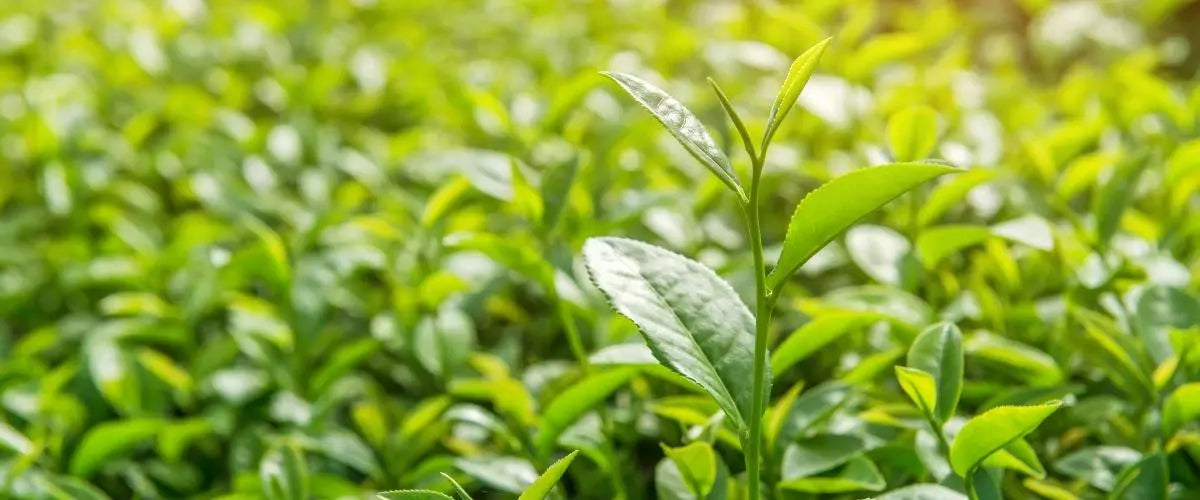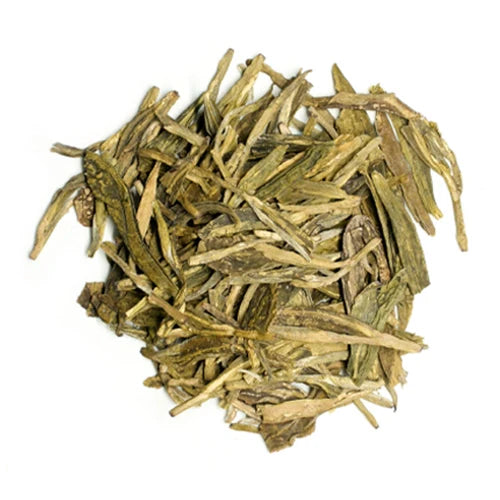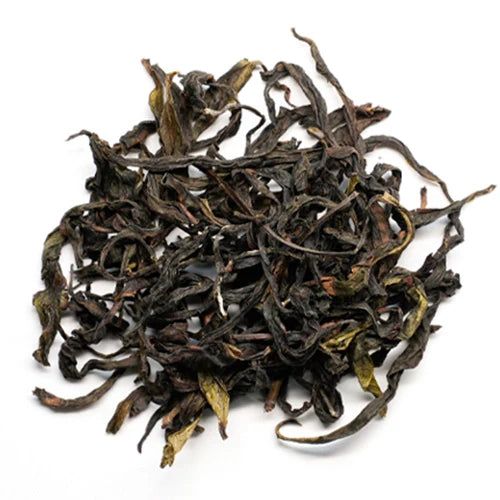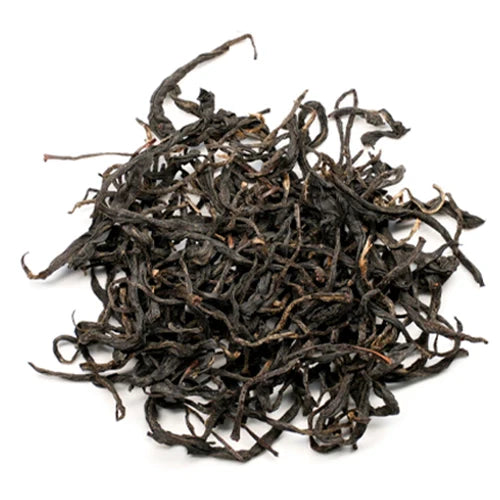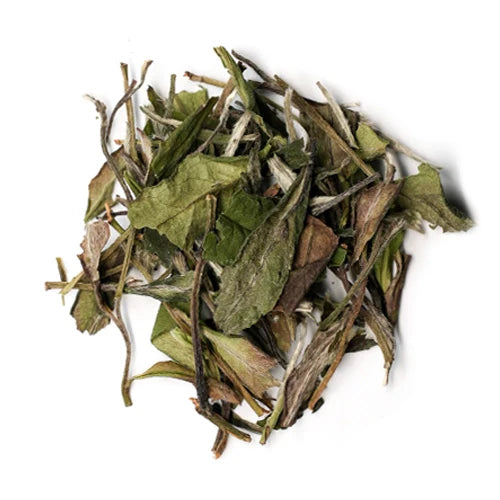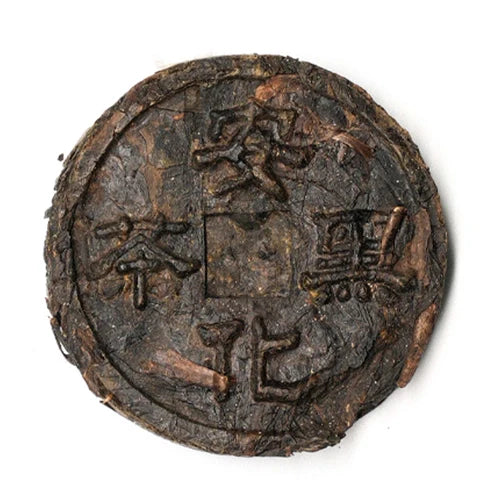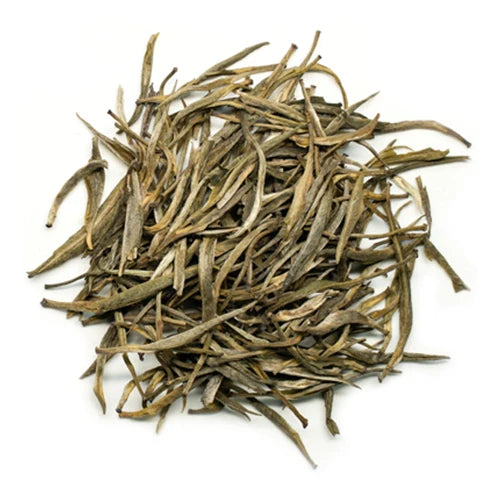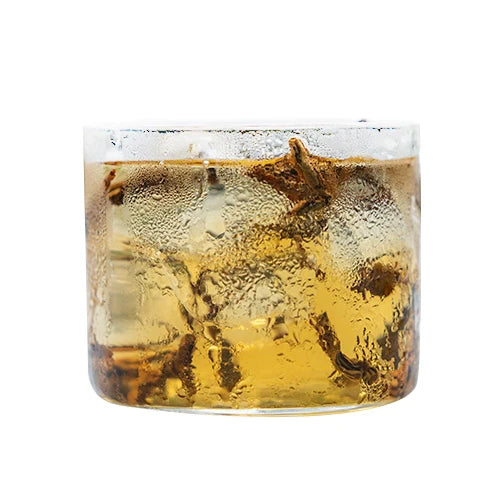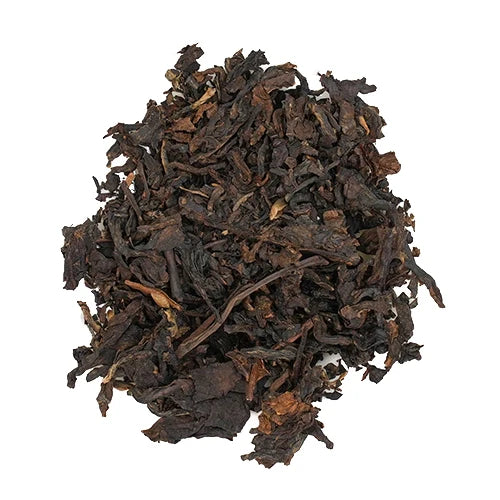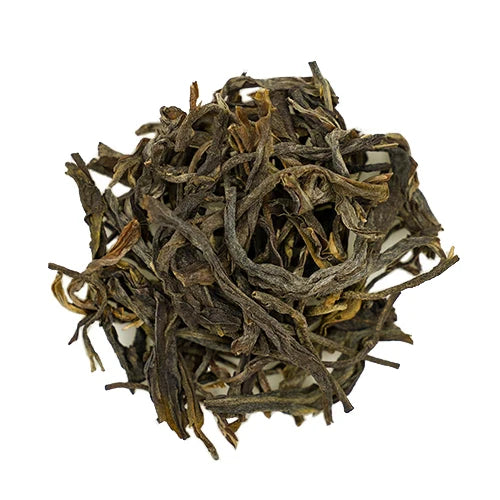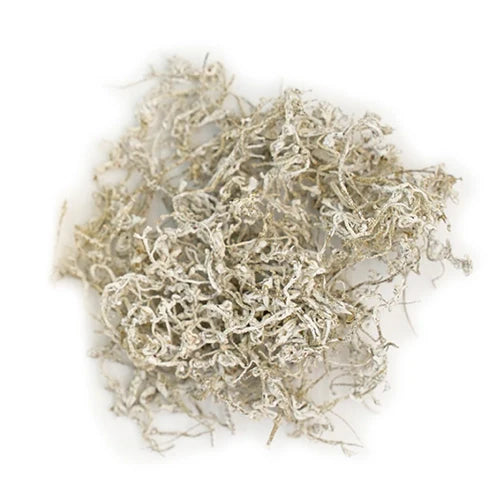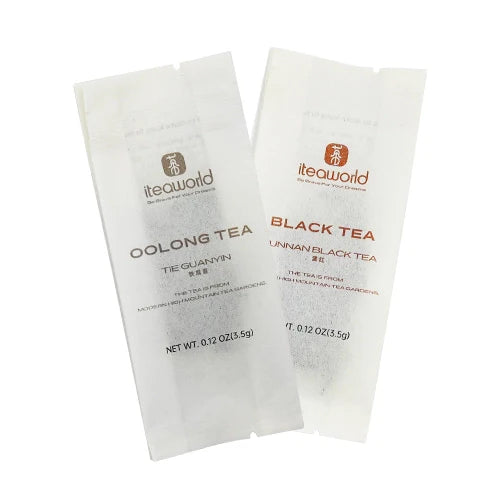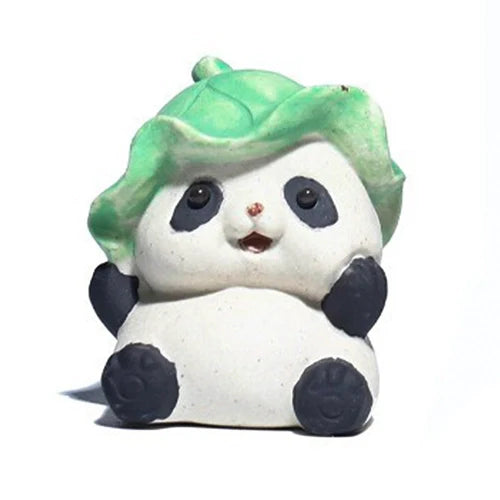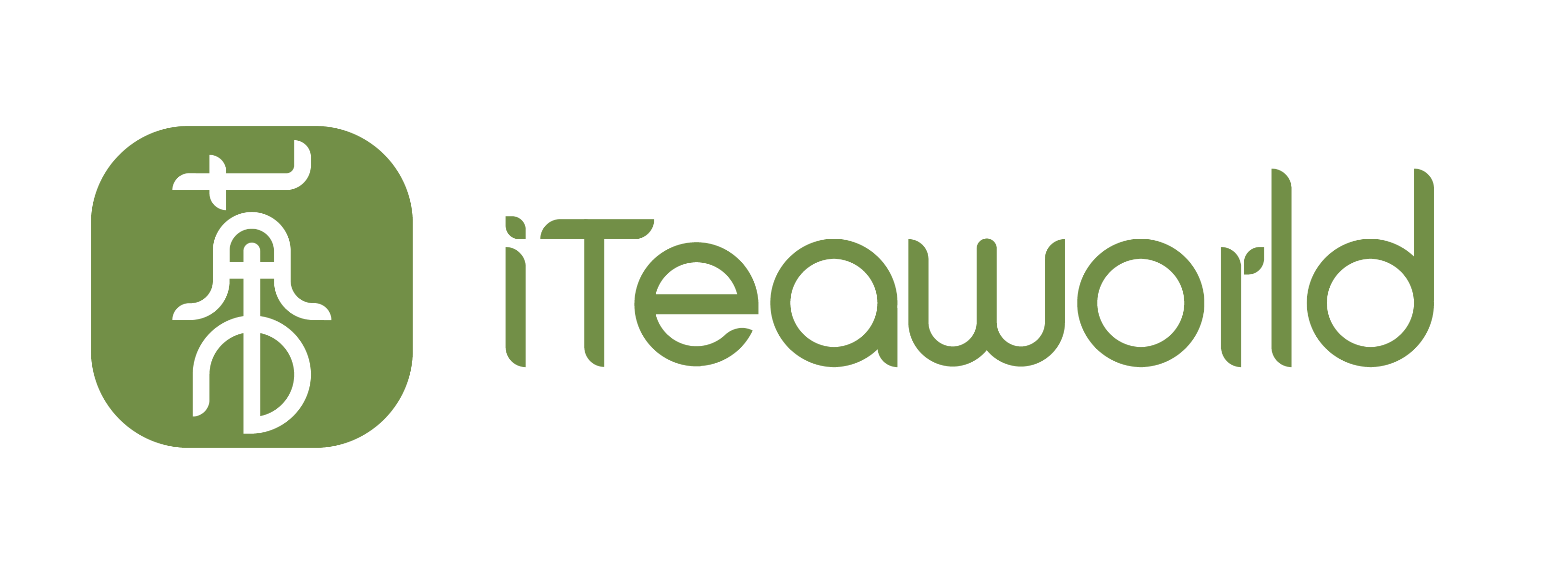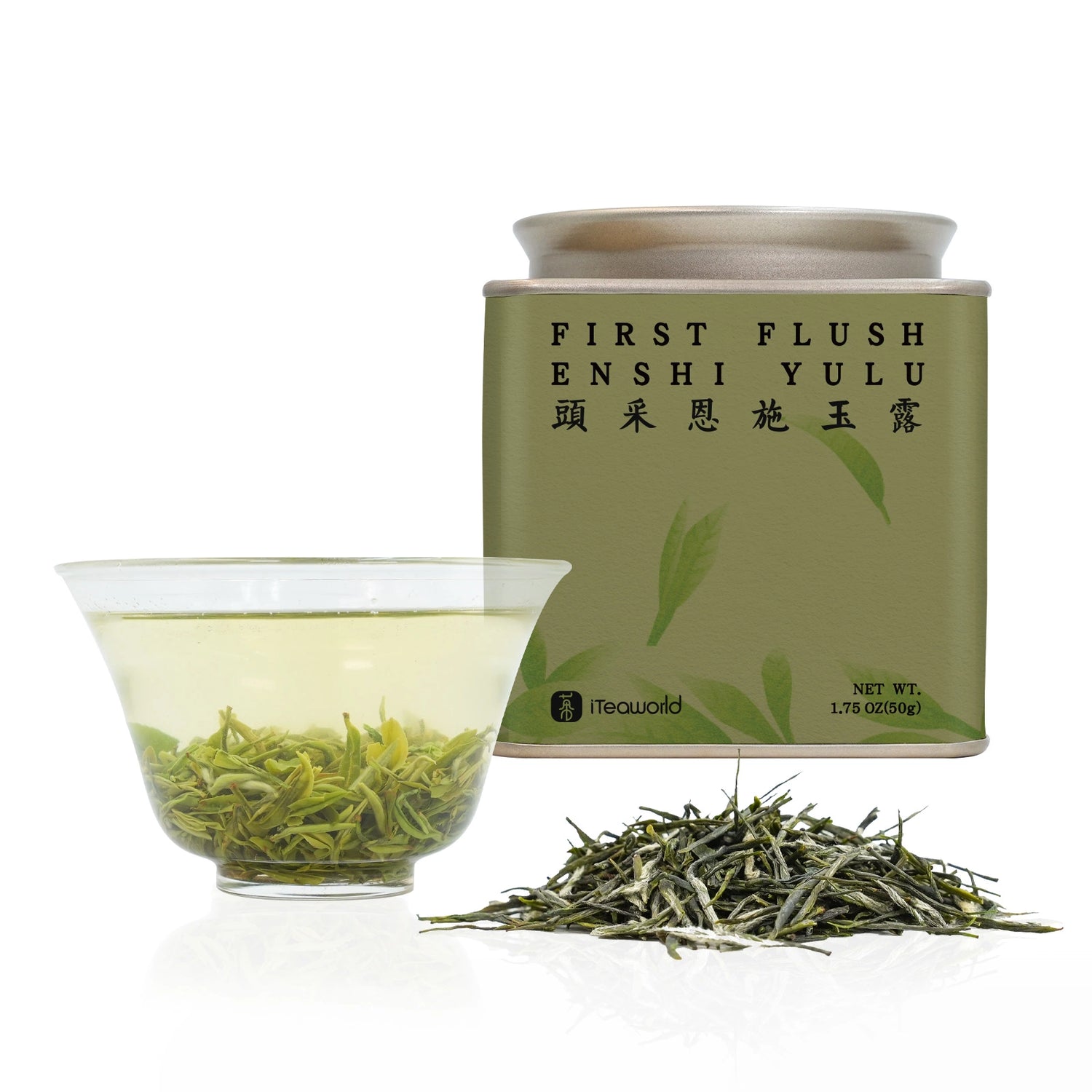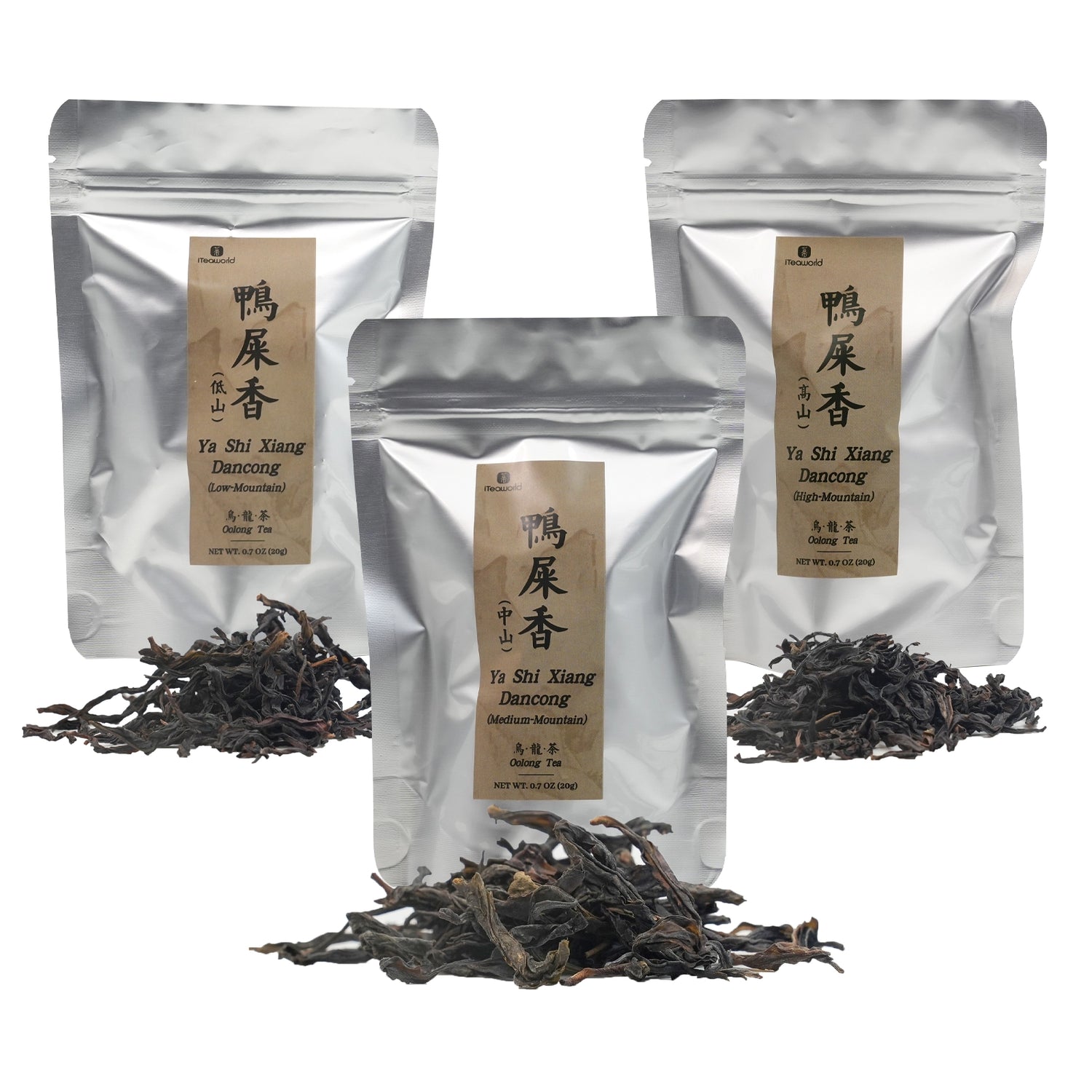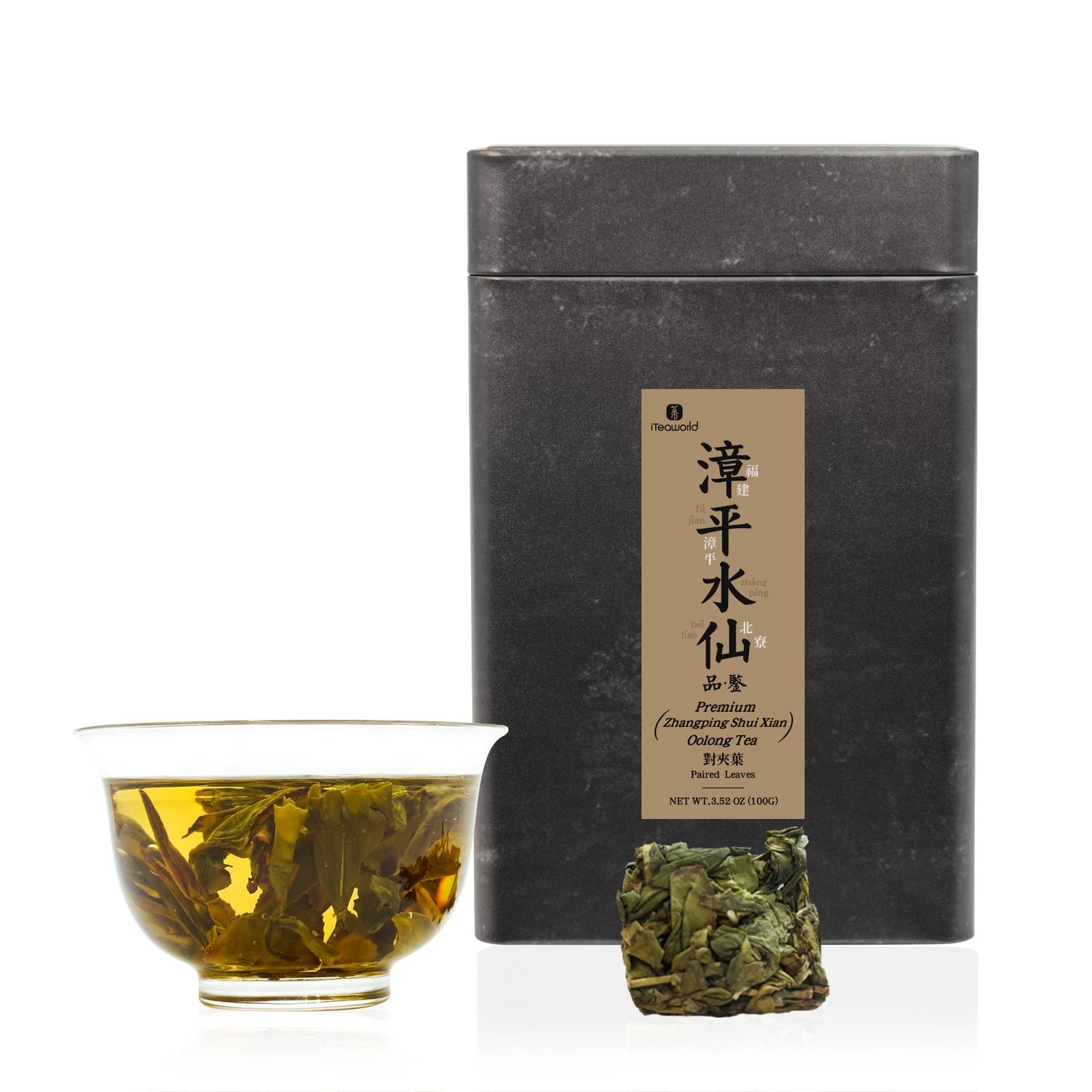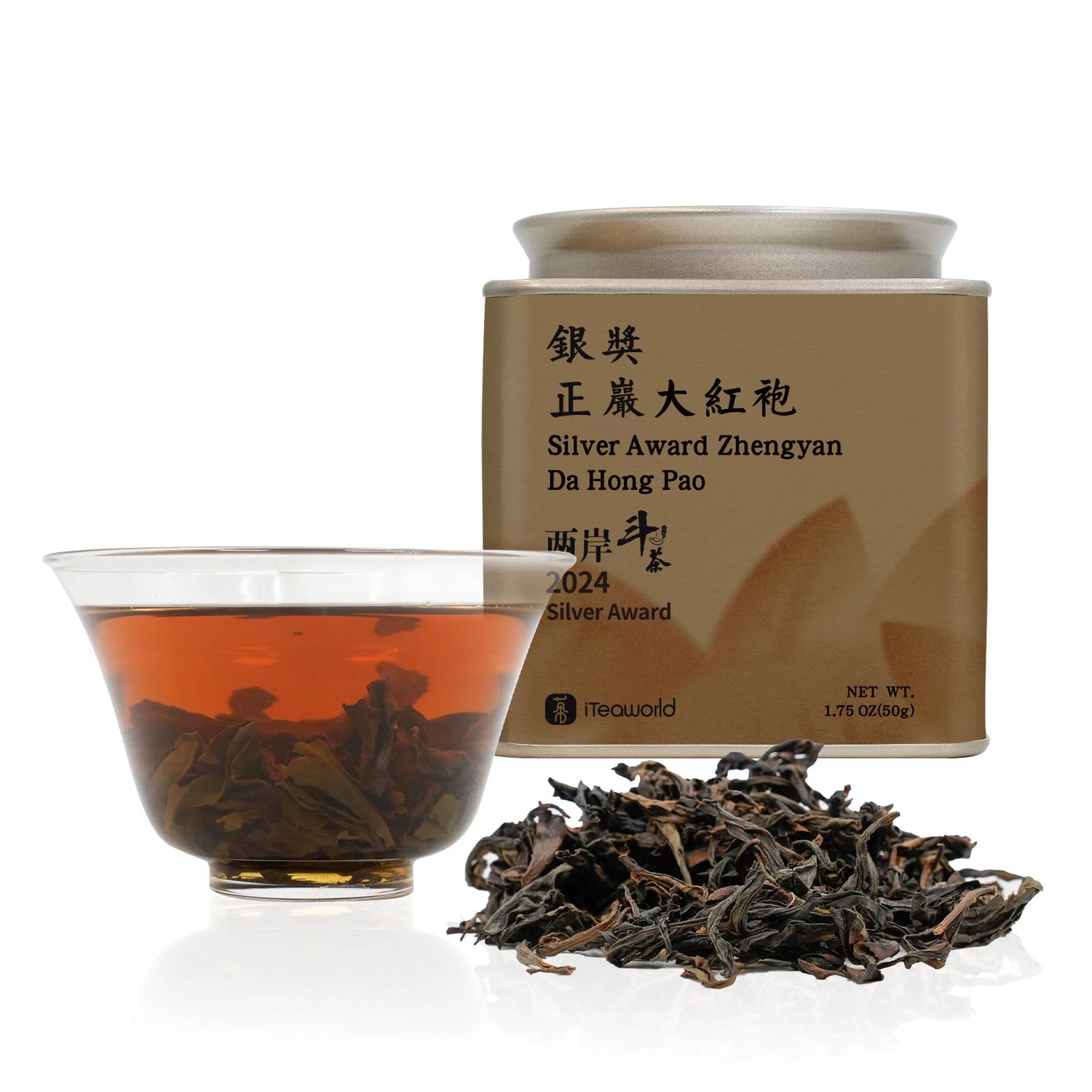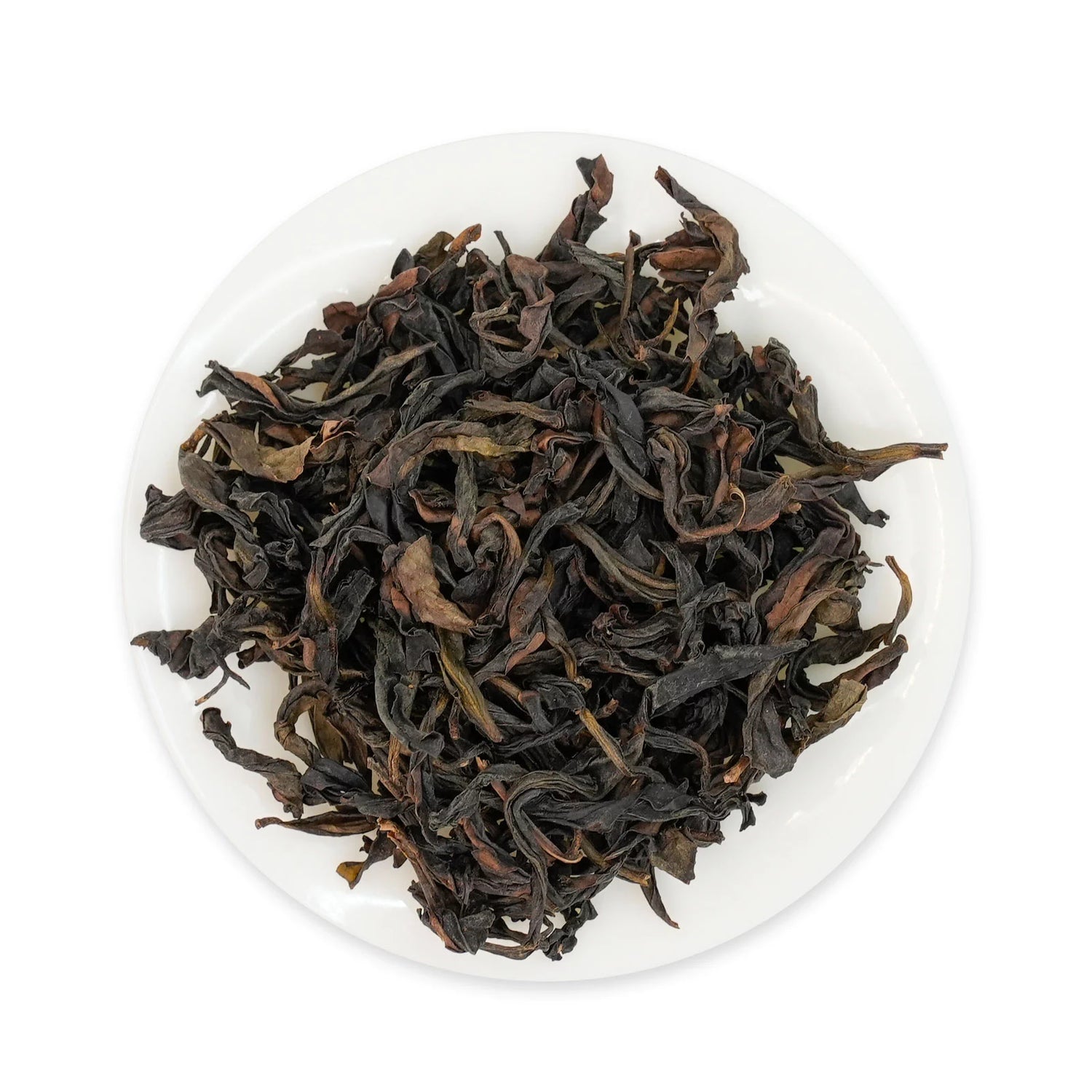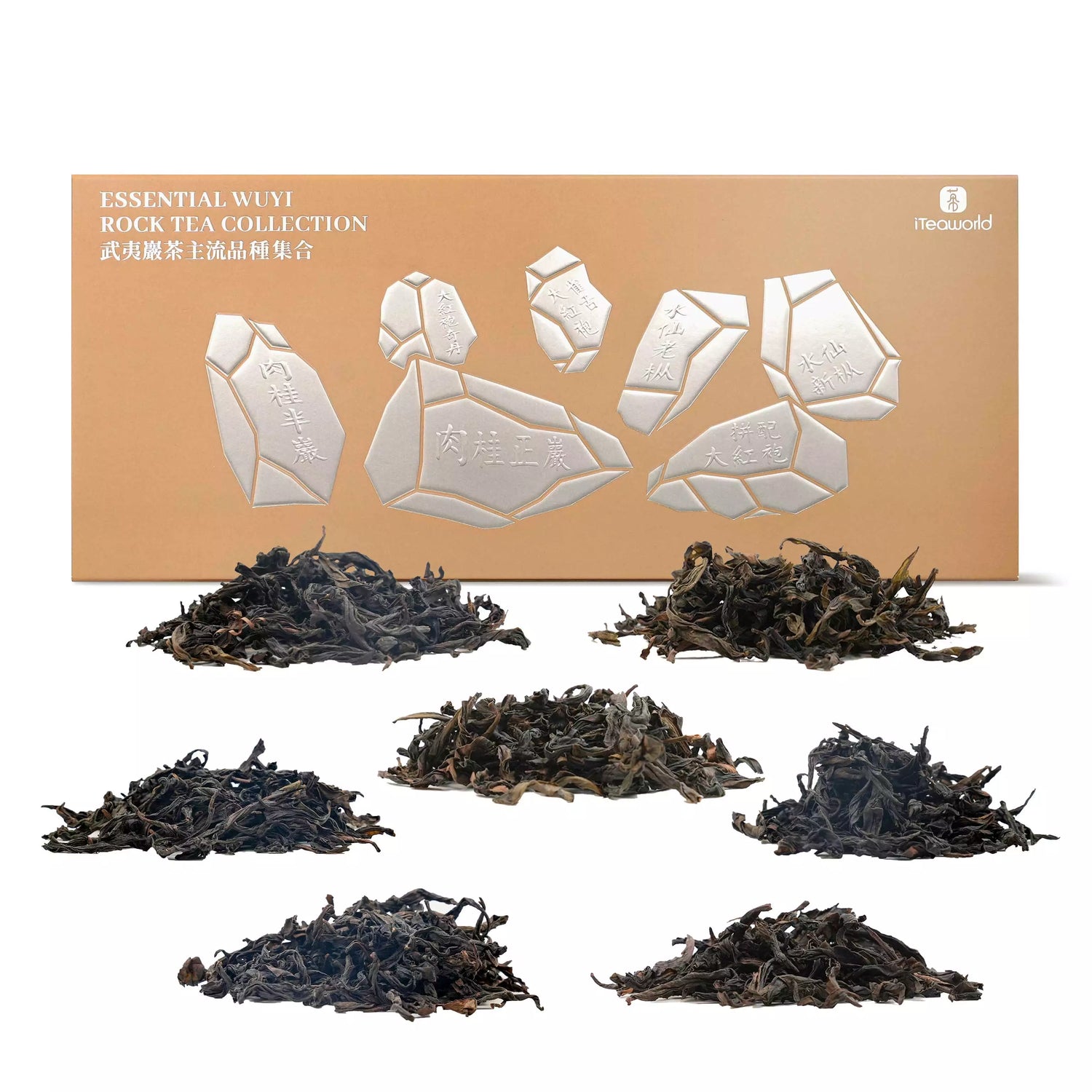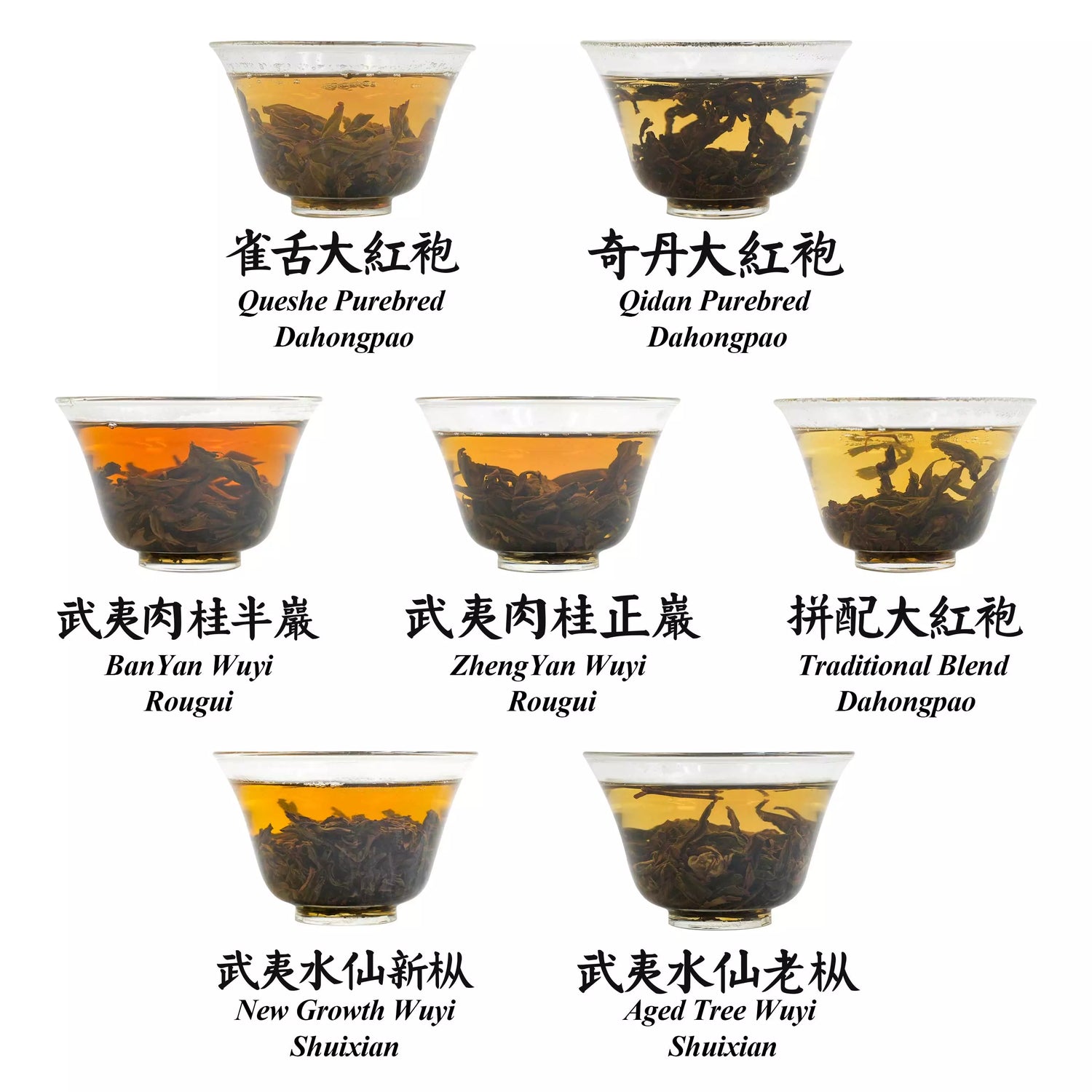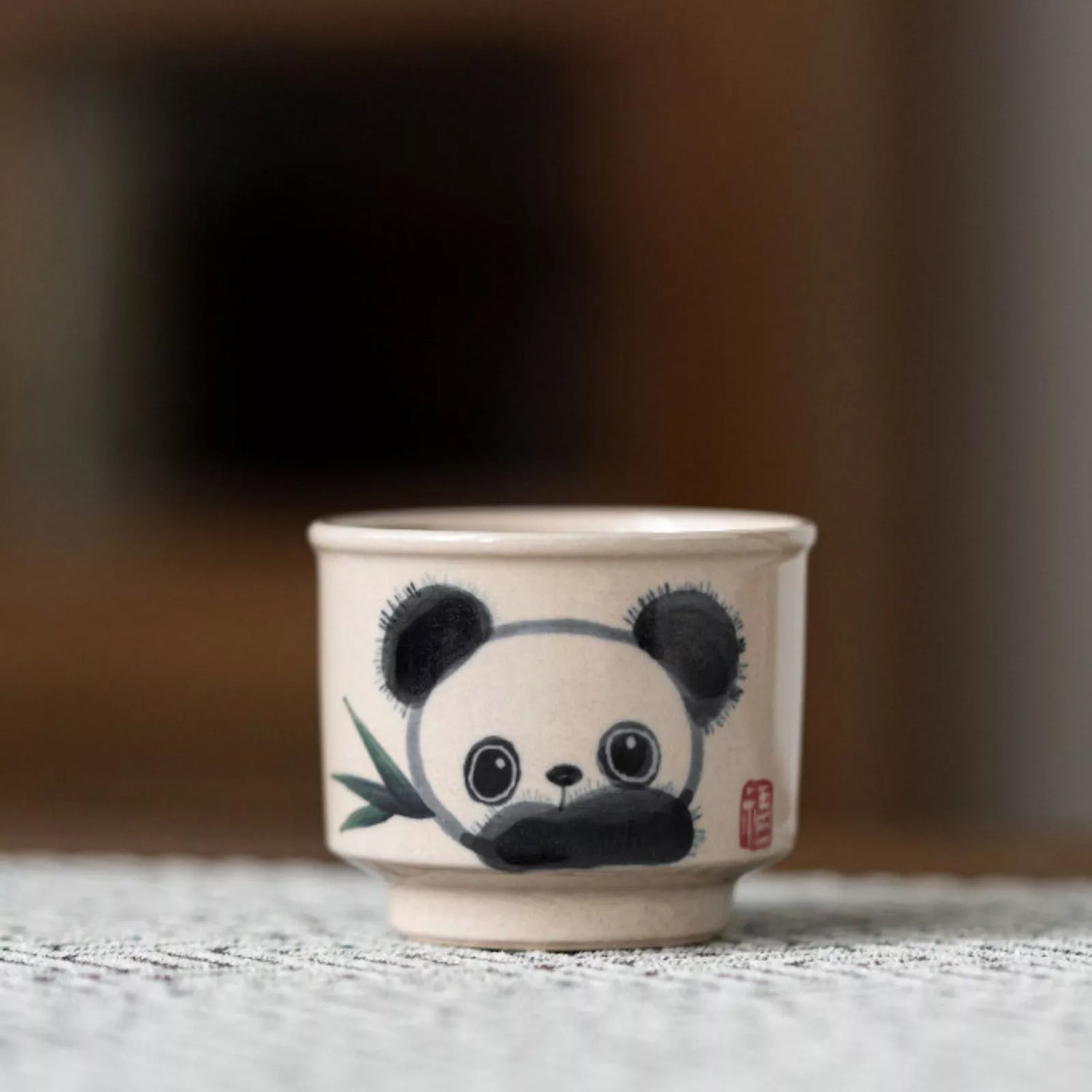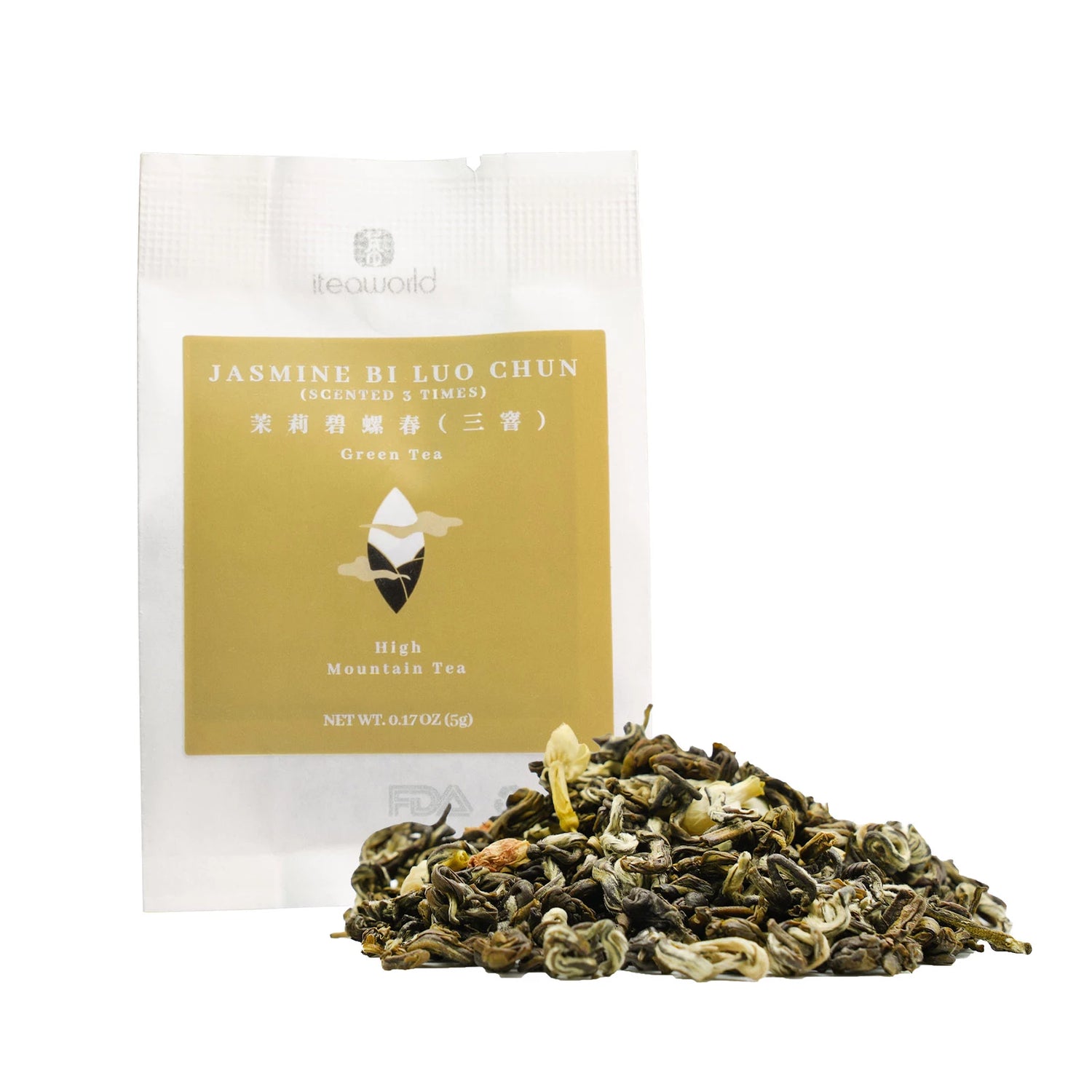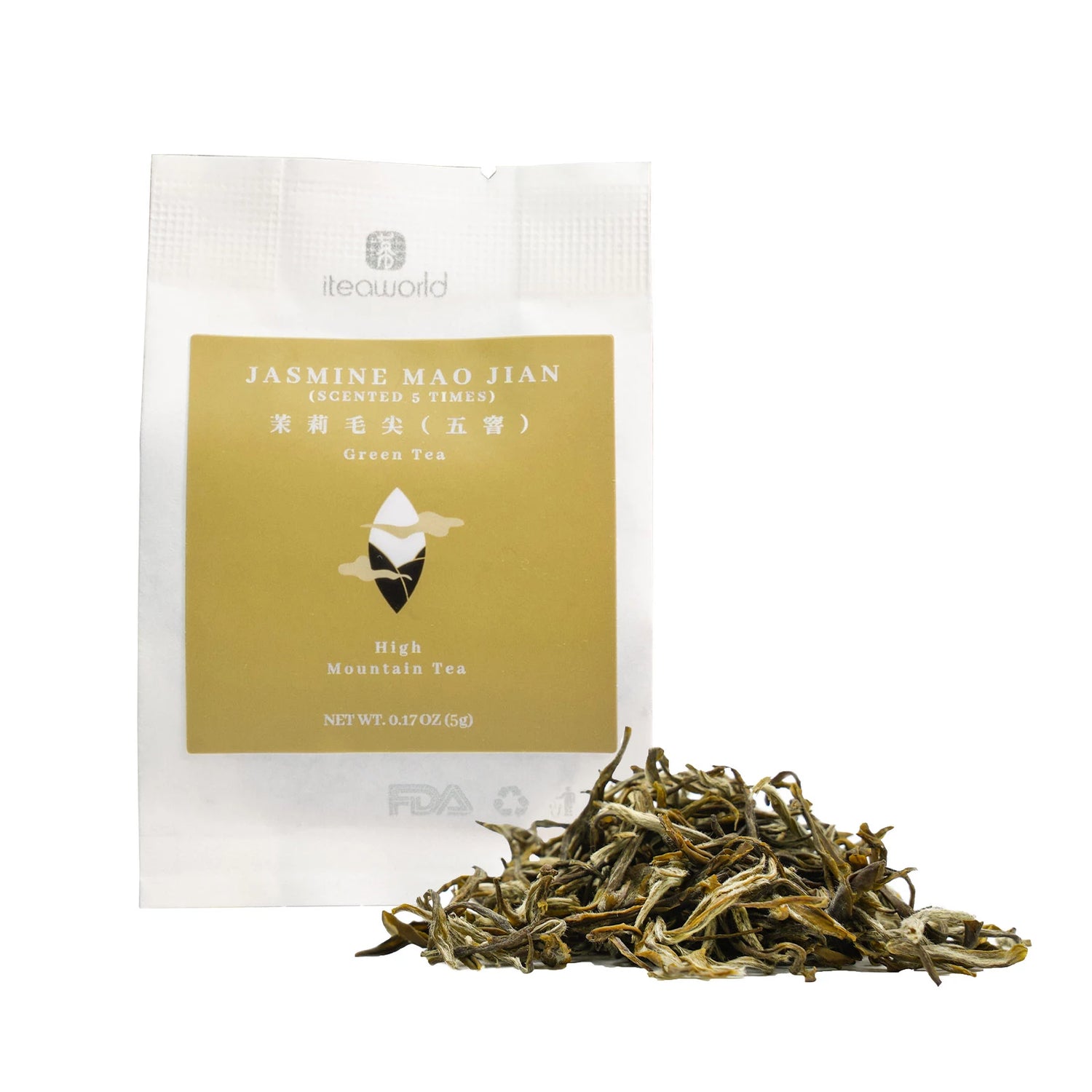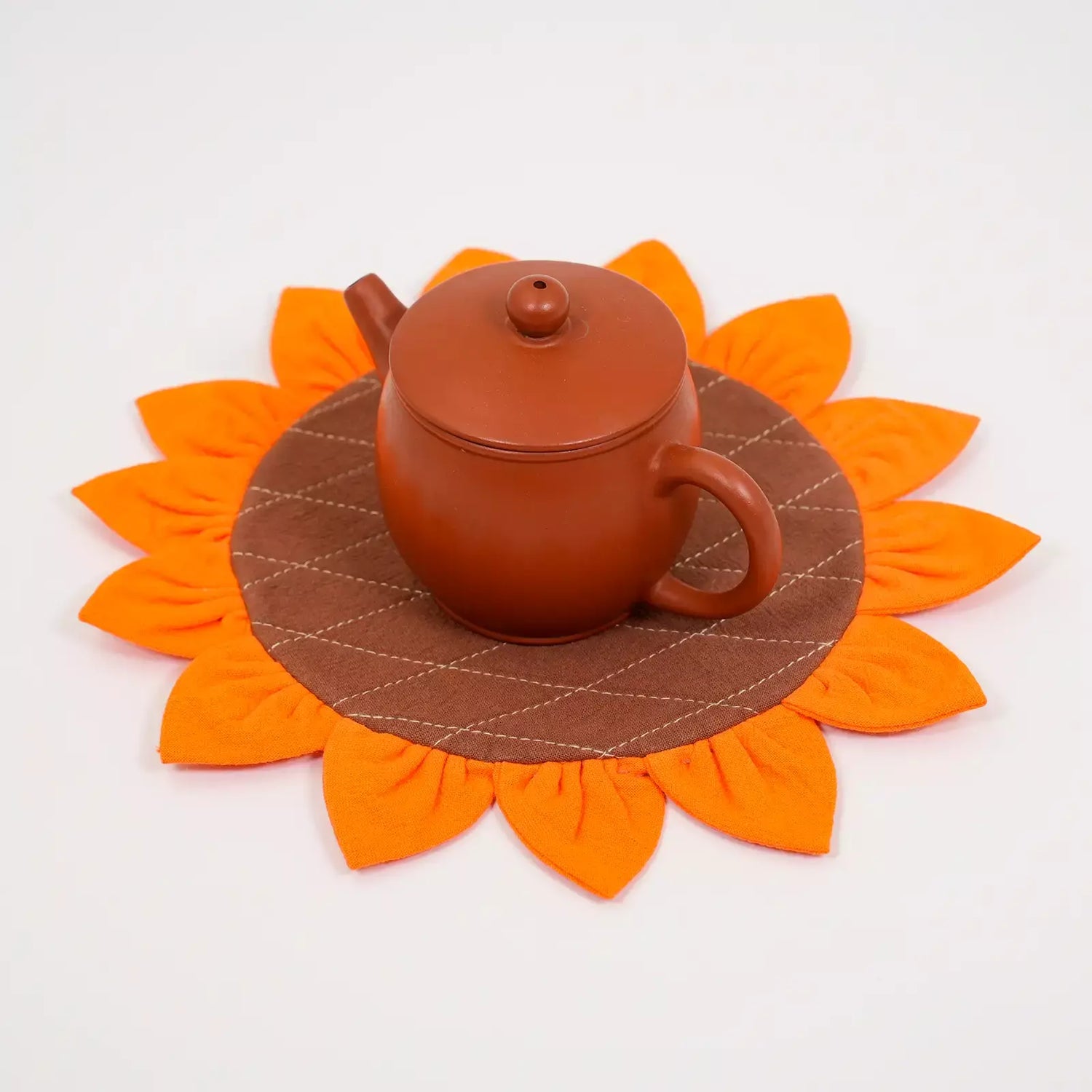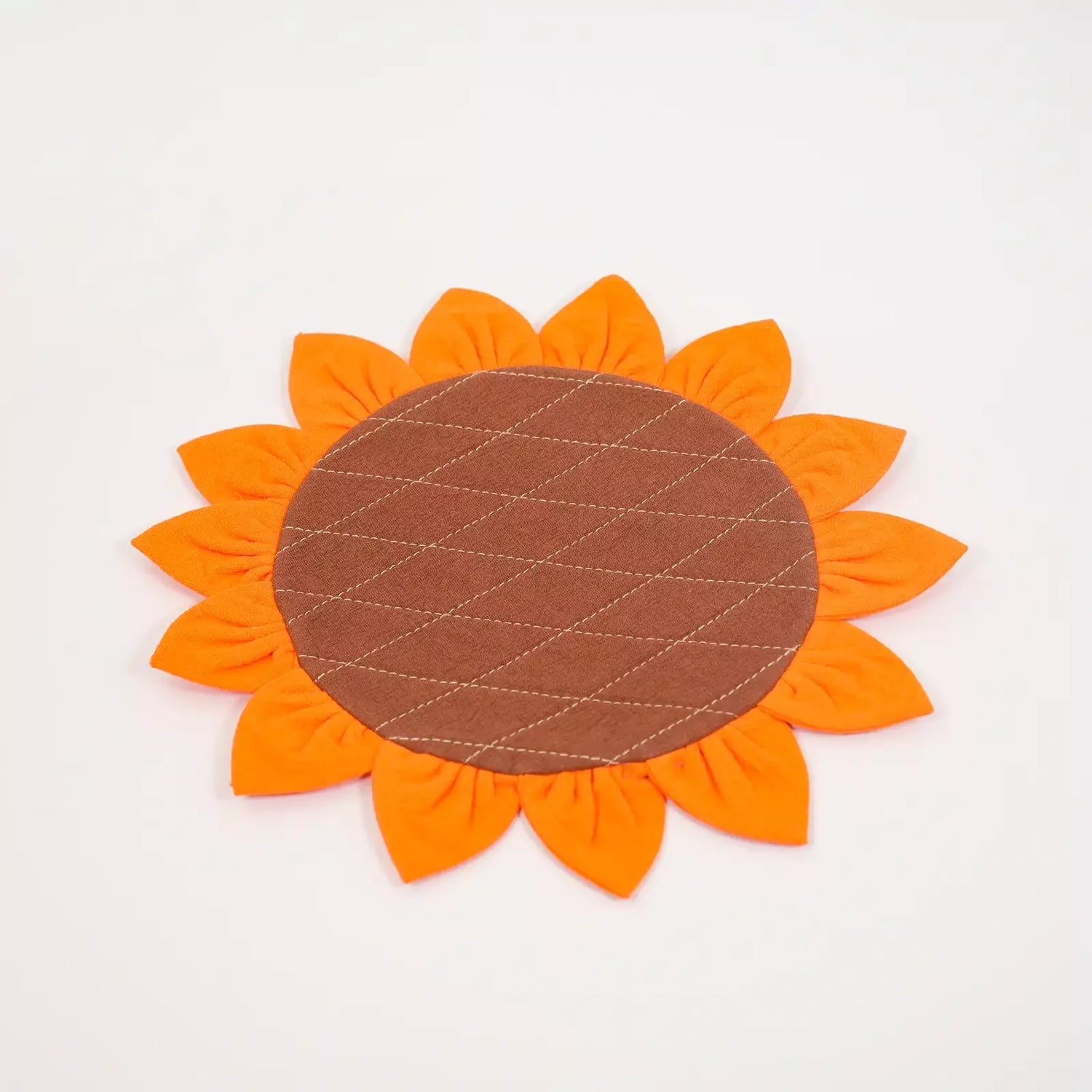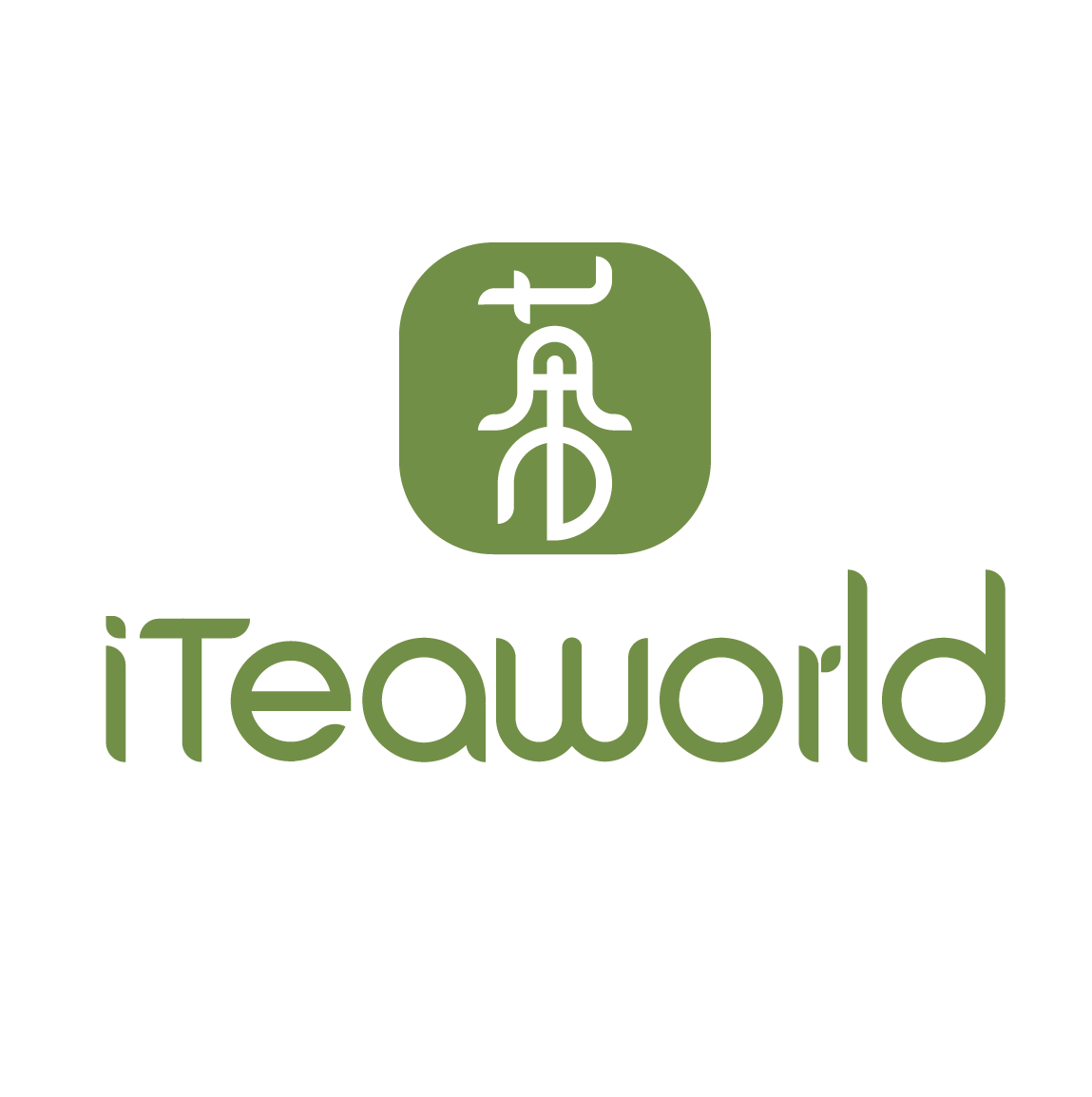Sort by:
204 products
204 products
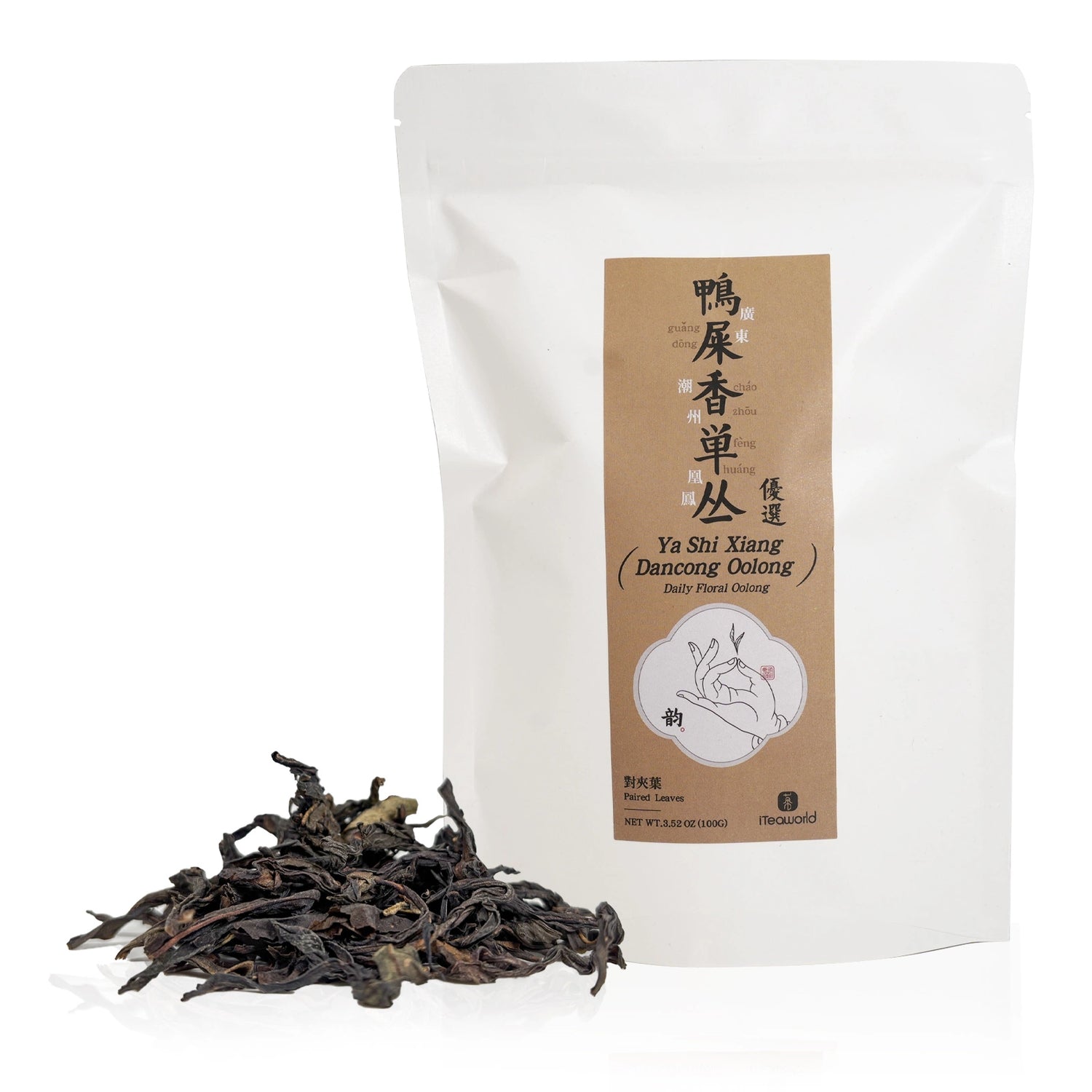

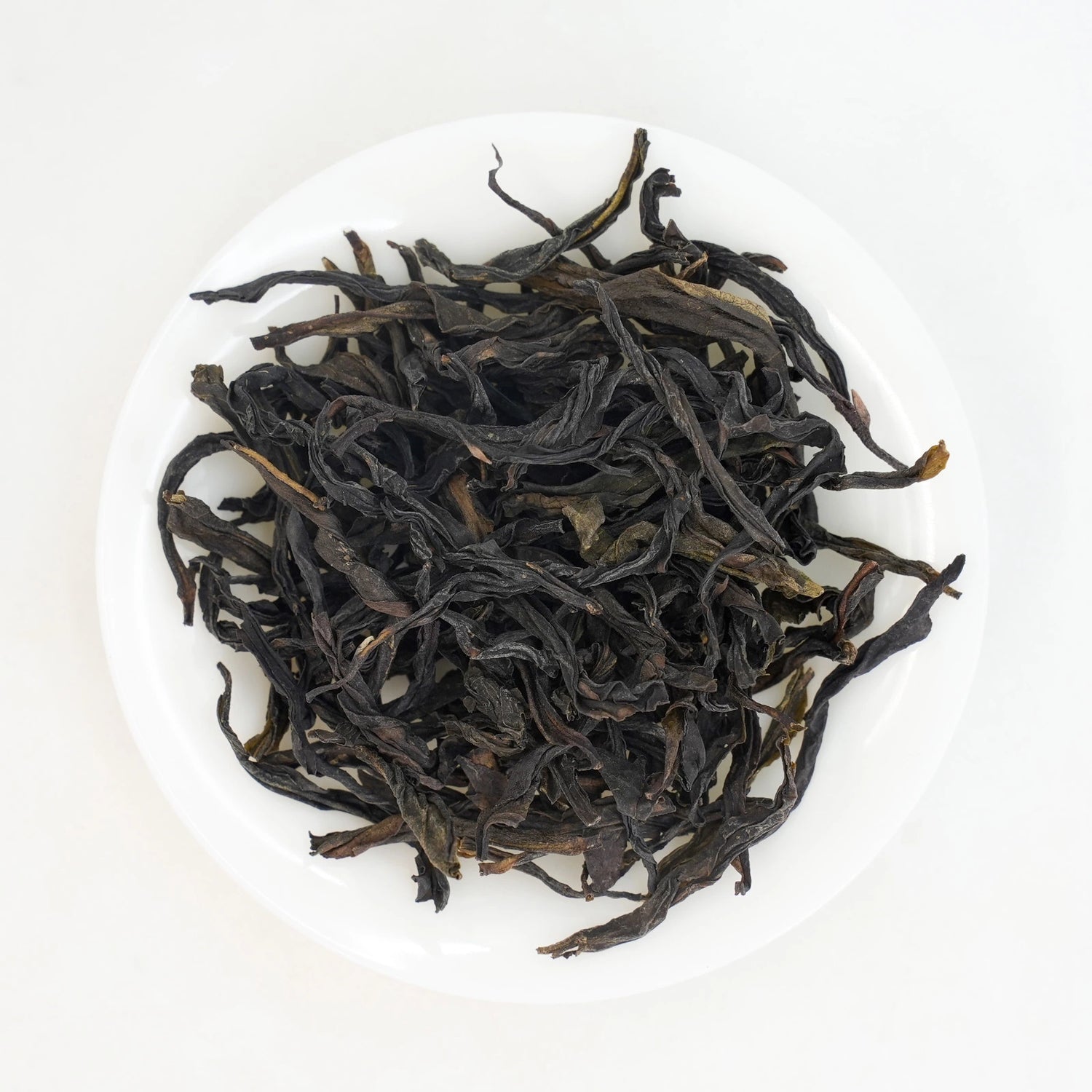
Ya Shi Xiang Dancong Oolong Tea for Daily Use 100g (2025 spring)
Ya Shi Xiang Dancong Oolong Tea for Daily Use 100g (2025 spring)
Ya Shi Xiang Dancong | 鸭屎香单丛乌龙茶
Despite its curious name, Ya Shi Xiang (Duck Shit Aroma) is one of the most beloved and accessible styles of Dancong Oolong. Grown in Wudong Mountain and harvested in April 2025, this tea is made from the original Ya Shi Xiang cultivar—famed for its lush floral aroma and golden nectar-like sweetness.
This batch comes from Fengxi Reservoir Village in Fenghuang Town, Chao'an District, Chaozhou, Guangdong. Situated at an elevation of 500–600 meters, the area is recognized as one of the premium zones for Zhongshan Dancong tea. Just above lies the mid-high mountain belt, but teas from this elevation are already regarded as top-tier among commercial-grade Dancongs, offering exceptional quality at outstanding value.
Crafted with a light roast to preserve its signature perfume, it offers a silky-smooth texture, vibrant floral notes, and a lingering sweet finish.
Origin: Fengxi Reservoir, Phoenix Town, Chaozhou, Guangdong
Tea Maker: Liu Chengpeng, a second-generation tea artisan with over 20 years of tea-making experience in a family that has crafted Dancong tea for generations.
Cultivar: Ya Shi Xiang (Duck Shit Aroma)
Harvest: April 2025 (Spring)
Elevation: 500-600m
Oxidation: Medium (40–50%)
Roast: Light (traditional charcoal finishing)
Shelf Life: 3 years
Storage: Store in an airtight container in a cool, dry, and odor-free place. For light-roasted Dancong, refrigeration is recommended to preserve its floral aroma.
Flavor
Aroma: Intensely floral—gardenia, magnolia, and honey
Taste: Lush, nectar-like sweetness with smooth body and soft mineral notes
Aftertaste: Long-lasting, floral-sweet with cooling effect in the throat
Brewing
Vessel: Porcelain gaiwan / Chaozhou clay pot
Water: 95°C | 203°F
Gaiwan Method:
5-7g per 100ml,1nd–3th: 8–12s | 4th+: add 5–8s per steep|Up to 9 infusions
Cold Brew Instructions:
Use 3–5g of tea with 500ml (about 17 oz) of water.
Water tip: Spring water or purified soft water is best.
Seal in a container and place in the refrigerator (39–46°F / 4–8°C).
Let it steep for 6–8 hours (ideal to brew before bed and enjoy in the morning).
Note: Too short a steep may result in weak aroma; over 10 hours may cause slight bitterness.
Occasions
Perfect for introducing friends to Dancong oolong
Uplifting afternoon companion with sweet, floral lift
A crowd-pleaser—great for casual or focused tasting
2025 Enshi Yulu First Flush - Jade Dew Limited Edition
We’re excited to bring you the 2025 Early Spring First Pluck Enshi Yulu, a premium green tea from Enshi City, Hubei Province, located in the beautiful Baiyangping Township. This tea is grown in the heart of the Enshi Yulu region at an elevation of 800-900 meters, surrounded by fresh, clean air and pristine nature—one of the core growing areas for Enshi Yulu. Master Zhang Yi, with over 20 years of tea-making experience, is a national-level senior tea master and tea evaluator. He follows in his father’s footsteps, blending traditional tea-making skills with modern techniques to craft every leaf with care. The leaves are picked around March 20th, during the first pluck of the season, when the leaves are at their freshest with a tender bud and one leaf.
Product details
Craftmaster: Zhang Yi (20 years expertise)
Tea Varietal: Enshi Cultivar Group (Entai Early Varietal)
Origin: Dabaoping Group, Baiyangping Town, Enshi City, Hubei, China | 800-900m Elevation
Harvest: First Spring 2025 Plucking (1 bud + 1 leaf standard)
Production Date: Crafted on March 20, 2025
Limited availability: Only 100 sets, each set is 100g (25g of each tea)
Expected shipping around April 5-10
Why choose Enshi’s native tea plant, the Entai Early variety?
For Enshi Yulu, we’ve selected the local Enshi native variety—Entai Early, a traditional “group variety” that’s been naturally selected and cultivated over time. This type of tea tree is more adaptable, has a longer lifespan, and offers more stable and complex flavors. It truly reflects the local environment and soil. Choosing group varieties ensures a purer, more nuanced taste profile, bringing you a natural, multi-layered tea experience.
What makes the core Enshi Yulu region special?
We’ve chosen the core tea-growing region in Enshi—Baiyangping Township in the Dabao Ping Group. This high-altitude area benefits from perfect growing conditions, with rich soil, plenty of sunlight, and a significant temperature difference between day and night. These conditions make the tea leaves grow slower and more concentrated in flavor, producing a tea with a deeper, purer taste that has both consistency and stability. Compared to other regions, Enshi Yulu from this area offers a more refined and authentic flavor.
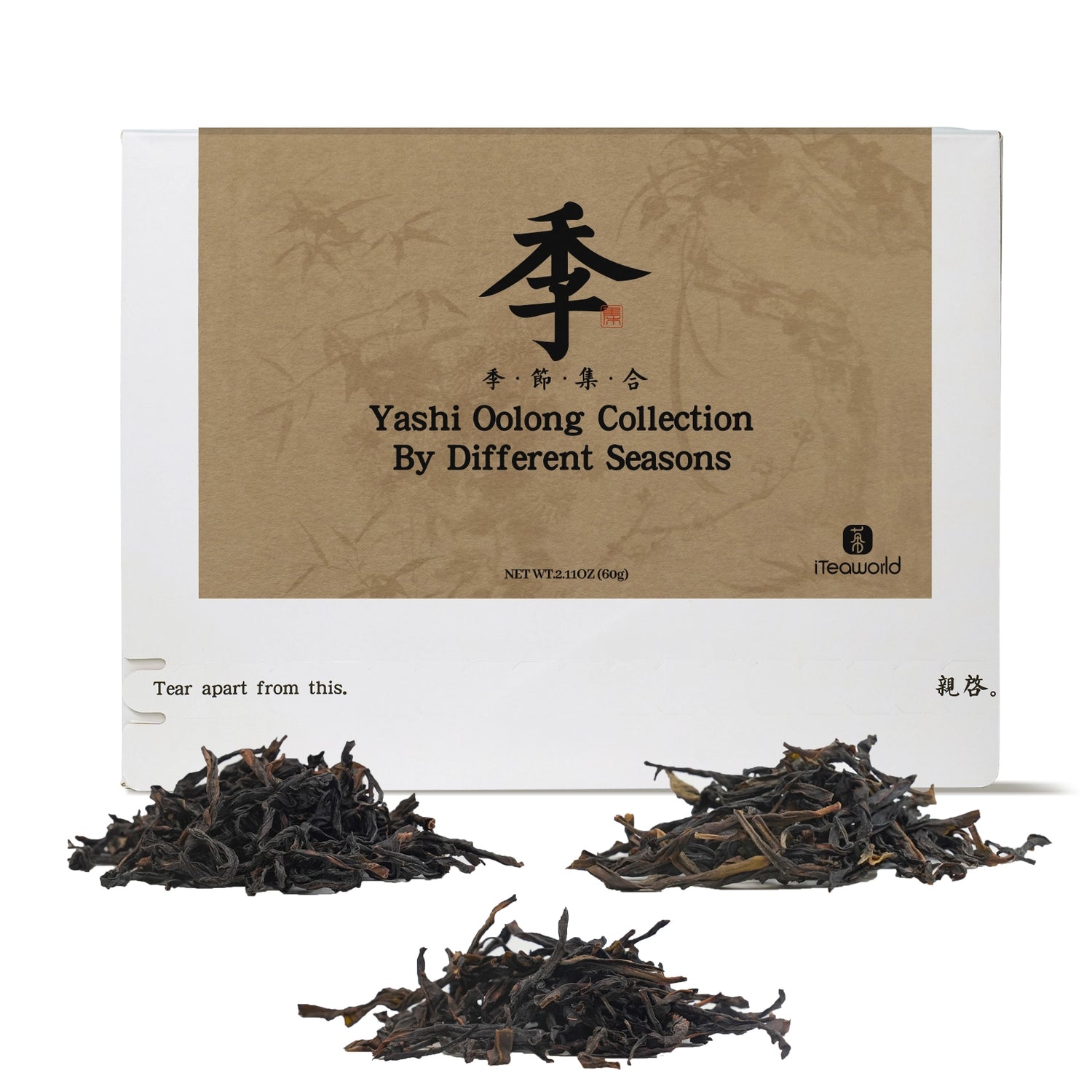
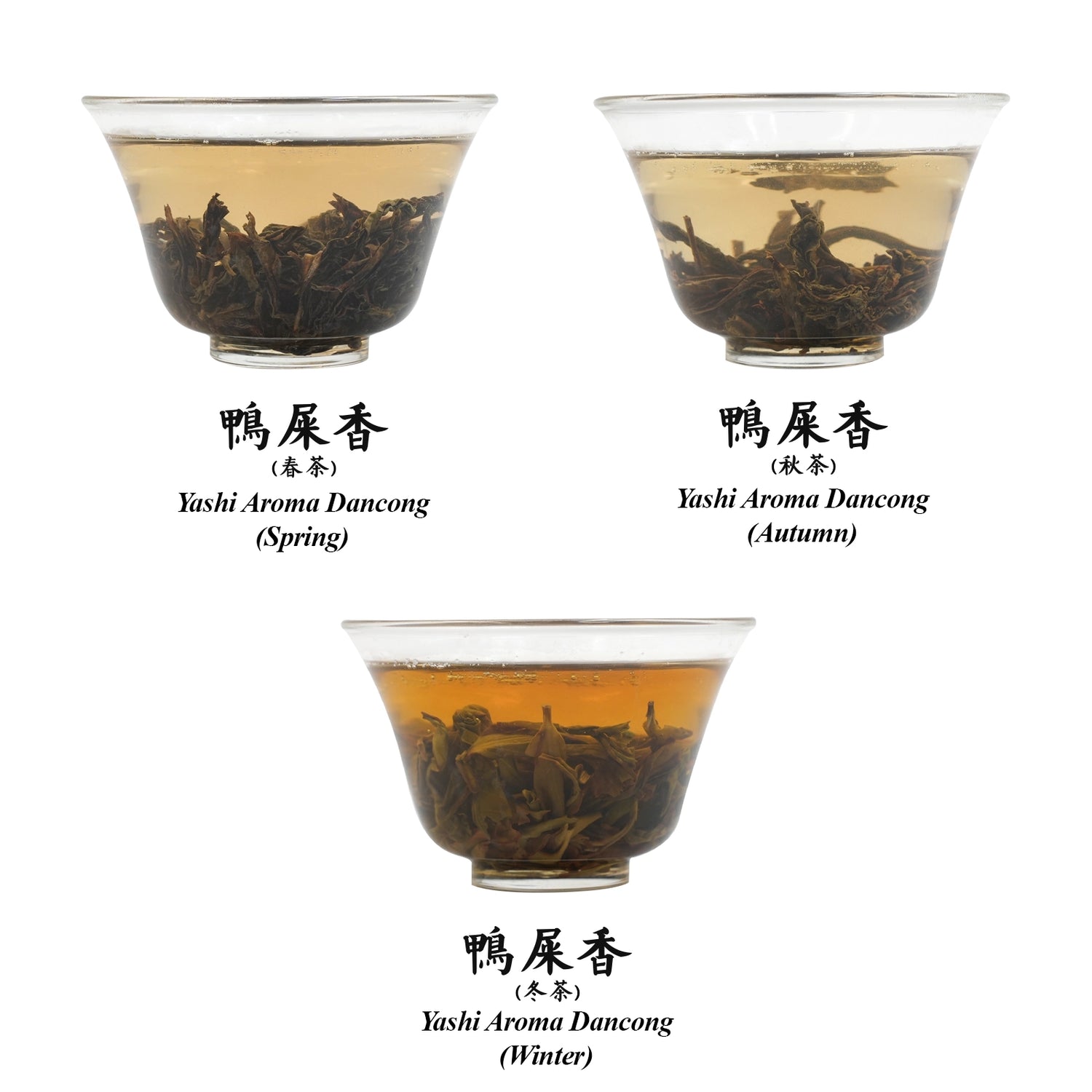
Ya Shi Xiang oolong Comparison Set – Spring, Autumn & Winter Varieties 60g
Ya Shi Xiang oolong Comparison Set – Spring, Autumn & Winter Varieties 60g
Seasonality of Oolong Tea
Oolong tea can be harvested in all four seasons: spring, summer, autumn, and winter. However, Wuyi rock tea is only harvested in the spring. Oolong teas picked in the midday usually have the most pronounced aroma. Summer teas are mostly used in milk tea and are less common in loose leaf tea markets.
Spring teas tend to grow slower, resulting in higher levels of amino acids and tea polyphenols, with a lower ratio of phenols to amino acids. However, due to the frequent rainy weather in tea-growing areas like Fujian and Guangdong, spring teas may have less aromatic compounds than autumn or winter teas. Therefore, autumn and winter oolongs tend to have a stronger aroma. Winter oolongs, in particular, may even have a crisp, cold-like fragrance. Spring oolongs, on the other hand, tend to be richer in substances, offering a sweeter and fresher taste.
This product features three different seasonal Duck Shit Aroma teas from the same tea master in Hutou Village, Fenghuang Town. The oxidation and roasting levels are different for each, as oolong tea is all about adjusting to the leaves' conditions. Winter leaves are thinner, so oxidation and roasting are usually lighter. Try these three teas to see if you can notice the flavor differences between the seasons.
Products Included:
- Ya Shi Xiang (Duck Shit) Dan Cong Oolong(Spring) 20g
- Ya Shi Xiang (Duck Shit) Dan Cong Oolong(Autumn) 20g
- Ya Shi Xiang (Duck Shit) Dan Cong Oolong(Winter) 20g
Origin:Hutou Village, Fenghuang Town, Chaoan District, Chaozhou City, Guangdong Province, China
Master Blender:Lin Shupeng
Processing Time:November 20, 2024
Best Before Date:36months
Tea Variety:Ya Shi Xiang (Duck Shit) Dan Cong variety
Altitude:300-400 meters
Soil Type:yellow soil
Oxidation Level: Medium oxidation (40-50%)
Roasting Level:
- Spring: Two roasts, medium fire, around 100°C (212°F)
- Autumn: Two roasts, medium fire, around 100°C (212°F)
- Winter: One roast, light fire, around 80°C (176°F)Very light roast, 70-80°C (158-176°F)
Roasting Method (Charcoal or Electric):charcoal briquetting
Brewing Recommendations:
Chinese-Style Oolong Brewing
- Teaware: Gaiwan or clay teapot
- Water Temp: 212°F (100°C)
- Tea-to-Water Ratio: 1g per 0.7 oz (20ml)
- Steep Time: 15 sec (1-3 steeps), add 5-10 sec after
- Re-Steep: Up to 7 times
Western-Style Oolong Brewing
- Teaware: Teapot, infuser, or French press
- Water Temp: 212°F (100°C)
- Tea-to-Water Ratio: 1 tsp (2-3g) per 8 oz (240ml)
- Steep Time: 3-5 minutes
- Re-Steep: Up to 3 times, adding 1minutes each time
Should You Really Buy High-Altitude Tea? This Product Might Help You Decide
High-altitude tea is grown in regions with big temperature differences between day and night, cooler temperatures, and frequent cloud cover. These conditions slow down the tea’s growth, keeping the leaves tender and rich in amino acids. This results in teas that are naturally sweeter, fresher, and more aromatic. High-altitude teas are perfect for light to medium oxidation and roasting levels. Examples of high-altitude oolongs include Taiwan High Mountain Tea and Phoenix Dan Cong.
Low-altitude teas, on the other hand, generally have higher levels of tea polyphenols, but tend to have a weaker aroma and lower endurance for multiple infusions.
This product features three Duck Shit Oolong teas, all crafted by the same tea master in Fenghuang Town with similar oxidation and roasting levels. The only difference is the altitude where they were grown, making it easy to compare how altitude affects the tea's flavor.
Products Included:
- Ya Shi Xiang (Duck Shit) Dan Cong Oolong (Low-Mountain) 20g
- Ya Shi Xiang (Duck Shit) Dan Cong Oolong (Medium-Mountain) 20g
- Ya Shi Xiang (Duck Shit) Dan Cong Oolong (High-Mountain) 20g
Origin:
- Lower Hill:Hutou Village, Fenghuang Town, Chaozhou City, Guangdong Province, China
- Middle Mountain:Fengxi Reservoir, Fenghuang Town, Chaozhou City, Guangdong Province, China
- High Mountain:Dongjiao Village,Fenghuang Town,Chaoan District,Chaozhou City,Guangdong Province,China
Master Blender:Lin zhiqiang
Processing Time:June 2023
Best Before Date:36 months
Tea Variety:Ya Shi Xiang variety
Altitude:
- Low-Mountain:300-400 meters
- Medium-Mountain:600 meters
- High-Mountain:800-900 meters
Soil Type: yellow soil
Oxidation Level:30-40%
Roasting Level:
- Low-Mountain:Two roasts, medium-light fire (95-105°C / 203-221°F)
1st roast: June-July 2023,2nd roast: After Mid-Autumn Festival 2023 - Medium-Mountain:Two roasts, medium-light fire (95-105°C / 203-221°F)
- High-Mountain: Three roasts, medium-light fire (95-105°C / 203-221°F),1st roast: June-July 2022,2nd roast: After Mid-Autumn Festival 2022,3rd roast: After Chinese New Year 2023
Roasting Method (Charcoal or Electric):charcoal briquetting
Brewing Recommendations:
Chinese-Style Oolong Brewing
Teaware: Gaiwan or clay teapot
Water Temp: 212°F (100°C)
Tea-to-Water Ratio: 1g per 0.7 oz (20ml)
Steep Time: 10-15 sec (1-3 steeps), add 5-10 sec after
Re-Steep: Up to 7 times
Western-Style Oolong Brewing
Teaware: Teapot, infuser, or French press
Water Temp: 190-200°F (88-93°C)
Tea-to-Water Ratio: 1 tsp (2-3g) per 8 oz (240ml)
Steep Time: 3-5 minutes
Re-Steep: Up to 3 times, adding 1-2 minutes each time
Introduction:
This Zhangping Shuixian square-shaped oolong is meticulously selected from the spring harvest of 2023 and crafted by a top tea master using unique traditional techniques. Plucked from high-altitude tea gardens in Zhangping, Fujian, at elevations of approximately 600 meters, the exceptional growing conditions impart a rich and mellow flavor to this tea. The plucking standard of primarily one bud and two leaves ensures a high orchid fragrance, a smooth and refreshing taste, and a bright golden liquor.
Reasons to Recommend:
- Core Production Area: Grown in Zhangping, Fujian, where the climate is warm, humid, and abundant in rainfall, with mild winters and cool summers. The average annual temperature ranges from 16.9°C to 20.7°C, with annual precipitation of 1450-2100 mm, a frost-free period of 251-317 days, and an average annual sunshine duration of 1853 hours, providing ideal natural conditions for tea production.
- Unique Shape: Zhangping Shuixian tea cakes combine the production methods of Minbei Shuixian and Minnan Tieguanyin. Pressed into square-shaped cakes using wooden molds, it is the only compressed tea in the oolong category, offering a unique style and rich traditional flavor.
- Traditional Handcrafted Process: This Zhangping Shuixian is a masterpiece of traditional handcrafted tea-making. The master insists on using manual techniques and traditional charcoal roasting for drying, preserving the authentic craftsmanship of Zhangping Shuixian tea.
Oxidation Level: Light to medium oxidation (25%-30%)
Roasting Level: Light roast (70-80°C)
Tea Garden Soil: Yellow-red soil
Master Blender: He Meiqing
Processing Time: June 2024
Best Before Date: 24 months
Tea Variety: Minnan Shuixian


Fabric Teapot Mat – Heat-Resistant Cloth Pad for Gongfu Tea Table
Fabric Teapot Mat – Heat-Resistant Cloth Pad for Gongfu Tea Table
The coasters and teapot mats are mainly made of cloth, designed to prevent cups and Yixing teapots from bumping against the table. When you place the cup back, it makes little to no sound, creating a softer and quieter tea-drinking atmosphere.
The fabric is absorbent, allowing you to easily wipe off any water or tea stains from the teapot or cup, keeping the table clean and dry. Most coasters and mats also feature elegant patterns or unique shapes, making them lovely decorative pieces for a tea table or tearoom.
Solid Color Teapot Mats (Red, Green, Blue, Coffee): 13 × 13 cm
*All sizes are measured by hand, and a margin of error of ±1 cm may occur.
These bag are specially designed to protect your teaware. Each bag is lined with soft padding that provides full cushioning and protection for teapots and cups, preventing damage from accidental bumps during handling or storage.
These teaware bags are perfect for both home storage and travel, offering reliable protection for your favorite teaware wherever you go.
Sizes:
Blue Persimmon Cup Bag – Tall: 5.5 cm (L) × 5.5 cm (W) × 8 cm (H)
Blue Persimmon Cup Bag – Short: 8.5 cm (L) × 8.5 cm (W) × 6 cm (H)
Da Hong Pao is the most iconic and renowned tea among Wuyi Rock Teas. This top Da Hong Pao is blended with 30% zhengyan Wuyi Rock Tea and 70% banyan Wuyi Rock Tea, roasted using traditional Wuyi charcoal methods. The liquor is golden and clear, with an exceptionally rich and pure aroma free of any off-notes.
On the palate, it is mellow and smooth, with a texture reminiscent of rice soup—delicate yet full-bodied. The fragrance is perfectly integrated into the liquor, achieving an ideal balance of flavor and aroma without any roasted taste. It offers a calm, refined, and extremely pleasant drinking experience. Even after multiple infusions, the aroma remains strong and long-lasting.
Origin: Jingshui Village, Xingcun Town, Wuyishan City, Fujian Province, China
Type: Zhengyan & Banyan Blend (Half-Rock, Half-Subrock)
Soil: Gravel Soil
Producer: Chen Hui
Harvest: November 2024
Aging: 36 months
Brewing Guide:
-
Water Temperature: 100°C (212°F)
-
Brewing Vessel: Gaiwan or Yixing Clay Teapot
-
Tea-to-Water Ratio: 5–7g per 100ml
-
Infusions:
1–3 infusions: 8–15 sec
Later infusions: +5–10 sec per infusion
Ya Shi Xiang (Duck Shit) Dan cong Oolong | The Icon of Guangdong Tea
The most famous Dancong oolong from Phoenix Mountain—misleading name, unforgettable taste.
Ya Shi Xiang, literally “Duck Shit Aroma,” is arguably the most well-known Phoenix Dancong oolong internationally. Despite its name, this tea is anything but unpleasant. In fact, it’s often referred to as the “calling card” of Guangdong oolongs, thanks to its bold floral fragrance, silky mouthfeel, and memorable backstory.
Tea Details
-
Cultivar: Ya Shi Xiang (Duck Shit )
-
Harvest: Spring 2025
-
Origin: DingYao Village, Fenghuang Town, Chaozhou, Guangdong, China
-
Elevation: 500-600m
-
Roasting: Traditional charcoal roast
A Legendary Tea with a Mysterious Name
This cultivar got its odd name from the mineral-rich yellow soil where it was originally planted—called “duck shit soil” (鸭屎土) by locals to discourage theft due to the tree’s extraordinary fragrance. Others say the name also comes from the leaf shape, which resembles the leaves of a local tree known as “duck foot wood.”
The original mother tree, now over 300 years old, grows at Pingkengtou Village (坪坑头) at 900m elevation in Phoenix Mountain, Chaozhou. Today, Pingtou is considered the most prestigious origin of Ya Shi Xiang.
Our selection comes from Dingdongjiao, a nearby village sharing the same terroir, altitude, and tree lineage—but with more accessible pricing.
Flavor Profile: Golden Honeysuckle, Orchid, and Ripe Peach
Officially categorized as “Yin Hua Xiang” (Honeysuckle Aroma), Ya Shi Xiang carries a fragrant bouquet of:
-
Orchid and honeysuckle (dominant)
-
Peach nectar or creamy vanilla (in higher grades)
-
Light bitterness on entry that melts into a long, sweet aftertaste
Its flavor is bright, floral, and juicy, making it one of the most beginner-friendly teas in the Dancong family—especially for those who love high-aroma oolongs.
“A tea with a silly name, but serious elegance.”
Brewing Recommendations
Gongfu Style (Recommended):
Teaware: Gaiwan or small teapot (100–150ml)
Tea Amount: 5g
Water Temp: 95-100℃/203-212℉
Infusion Time: Start at 10–15 seconds; can go 7+ infusions
Western-style Brewing:
2g per 100ml
1-3 minutes,95-100℃/203-212℉
Re-steep 2–3 times
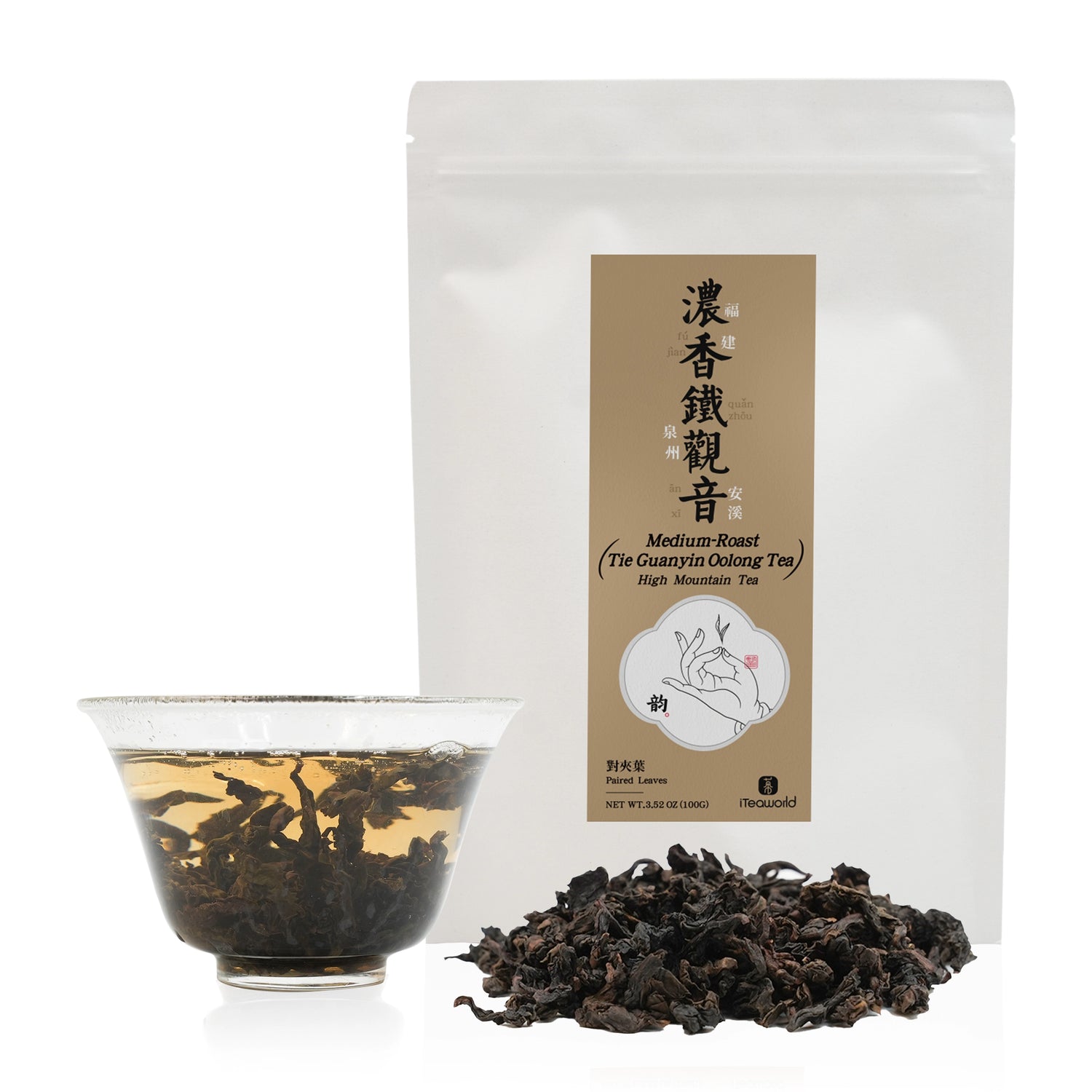
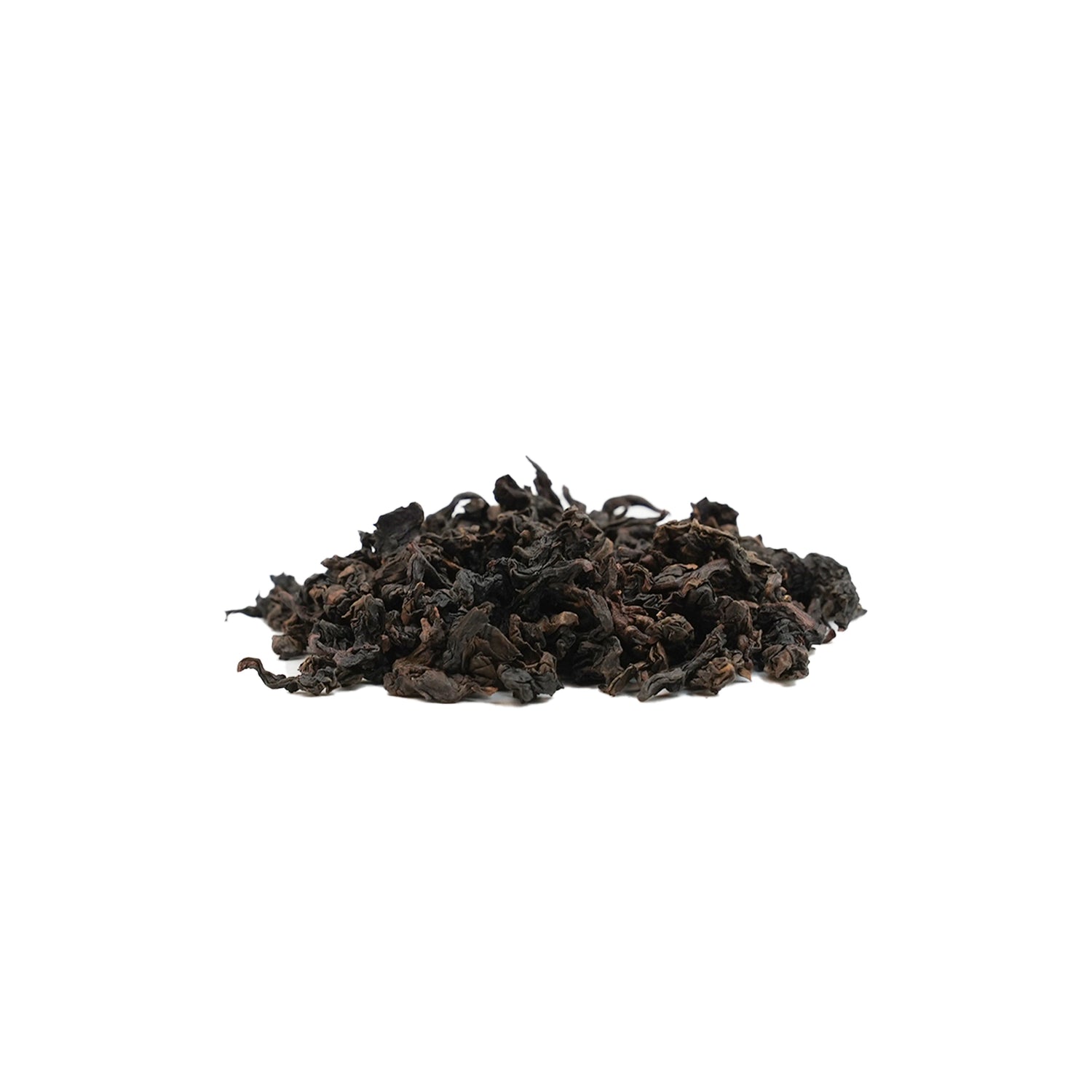
Anxi Tie Guan Yin (Traditional Charcoal-Roasted Oolong) for Daily Enjoyment
Anxi Tie Guan Yin (Traditional Charcoal-Roasted Oolong) for Daily Enjoyment
Tie Guan Yin (Traditional Charcoal-Roasted Oolong) | 浓香型铁观音(炭焙)
Introduction
Tie Guan Yin is one of the most iconic oolong teas from China’s Fujian province. While its light-roast counterpart is known for floral fragrance, this traditional roasted style highlights a different spectrum—mellow body, dried fruit depth, and layered complexity.
This tea comes from Longjuan Village in Anxi, grown at 800–1000m elevation in sandy, well-drained soils surrounded by frequent mists. The region is known for producing small-batch charcoal-roasted Tie Guan Yin with strong aging potential and rich aroma.
Crafted by Wang Zhiyuan, a veteran tea maker, this 2024 spring harvest features tightly rolled leaves, roasted over low charcoal heat. Expect caramel sweetness, notes of longan and jujube, and a honeyed aftertaste. It’s a refined yet accessible choice for those who enjoy structure, warmth, and endurance in their oolongs.
Origin: Longjuan Village, Longjuan Township, Anxi County, Fujian, China | 800–1000m
Roasting: Traditional charcoal roasting (light-medium fire)
Tea Maker: Wang Zhiyuan, seasoned tea artisan with local acclaim
Cultivar: Tie Guan Yin
Harvest: Autumn Tea, 2024
Oxidation: Medium (45–55%)
Roast: Light to medium (Charcoal roasted)
Suitable for: Daily drinking, cooler seasons, or fans of roasted, full-bodied oolong
Shelf Life: 3–5 years
Storage: Store in an airtight container away from light, heat, and moisture. Best consumed within 1–2 years for peak aroma; suitable for slow mellowing.
Brewing
Vessel: Yixing clay teapot or porcelain gaiwan
Water: 100ml spring/pure water : 5g tea | 100°C / 212°F
Steeping:
-
1st–3rd infusions: 10 seconds
-
Later infusions: Add 5–10 seconds per steep
-
Can be brewed up to 8–10 times
Flavor Profile
Aroma: Caramel, roasted rice, longan, jujube, hint of smoke
Taste: Full-bodied and mellow, with sweet dried fruit and subtle char
Mouthfeel: Silky and rounded, with thick liquor and soft finish
Aftertaste: Honeyed, clean, and slightly mineral—lingers on the palate
Best Enjoyed When...
-
You’re looking for a warming, cozy oolong for cooler days
-
You enjoy roasted teas with depth, but not too much bitterness
-
You want a red wine–like oolong: structured, smooth, and complex
A semi-fermented oolong tea grown in the rocky crevices of Fujian’s Wuyi Mountain, renowned for its unique "rock bone floral aroma" (Yan Yun). Only tea cultivated within Wuyi City’s protected region can bear this name. Other areas (e.g., Anxi) do not produce Rock Tea.
This collection features the three most iconic Wuyi rock teas—Da Hong Pao, Shuixian, and Rougui—along with their key variations. You’ll taste the difference between blended and purebred Da Hong Pao, young and old Shuixian trees, and core vs. semi-core Rougui. A guided journey into the depth and complexity of Wuyi rock tea.
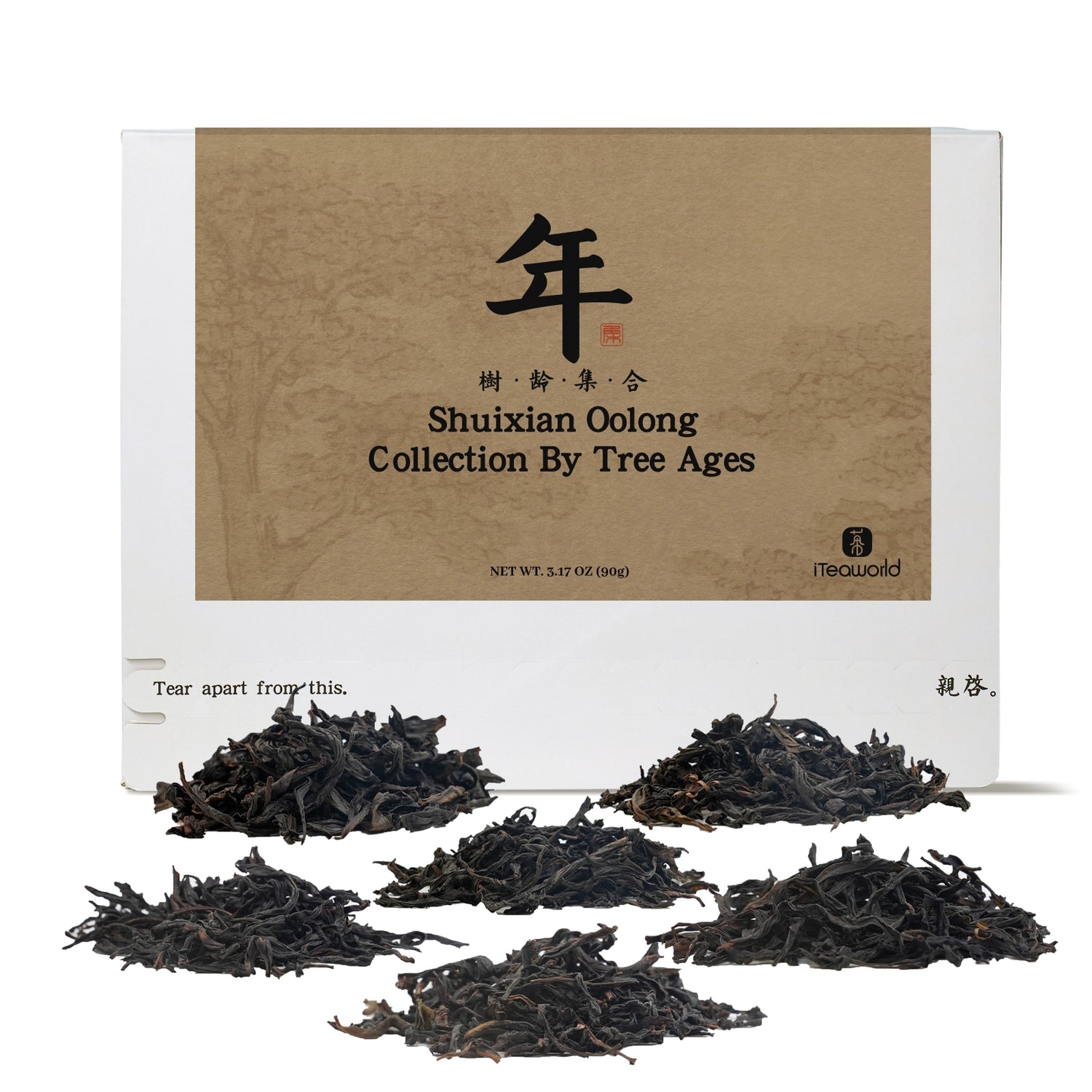
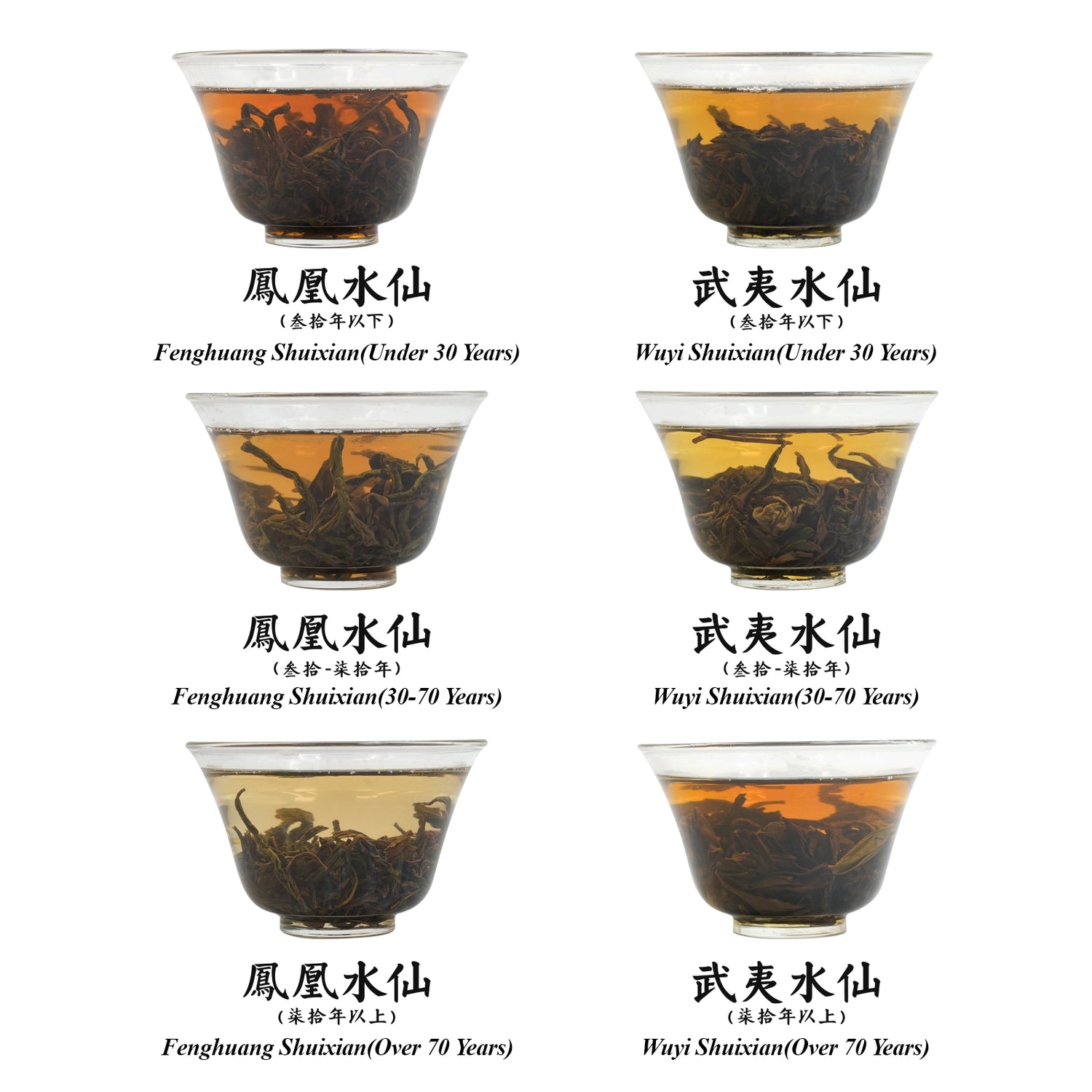
Chinese Oolong Tea Comparison Set: 6 Tree-Aged Blends (Fenghuang & Wuyi Shui Xian)90g
Chinese Oolong Tea Comparison Set: 6 Tree-Aged Blends (Fenghuang & Wuyi Shui Xian)90g
Maybe You’re Not a Fan of Aged Tea Trees
In both Pu-erh and oolong tea, the age of the tea tree matters. Generally, older trees are rarer, which drives up their price. The age of the trees is most significant in certain oolong varieties, like Shui Xian (including Phoenix Shui Xian, Wuyi Shui Xian, and Minbei Shui Xian).
Typically, younger tea trees contain higher levels of amino acids but lower levels of tea polyphenols and minerals. This results in teas that are sweeter and fresher, but with a lighter, less complex flavor. These teas tend to have more floral notes and are best suited for light fermentation and roasting processes.
On the other hand, older tea trees tend to have higher levels of tea polyphenols, fiber, sugars, and minerals. They’re not as restricted by processing techniques, and the resulting teas are often richer, with more prominent sweetness, a longer-lasting aftertaste, and better endurance for multiple infusions.
This product features Phoenix Shui Xian and Wuyi Shui Xian from the same origin, made with similar processes but from different-aged trees. It’s a great way to compare how tree age influences the flavor of oolong tea.
Products Included:
- Fenghuang Shuixian(Under 30 Years)
- Fenghuang Shuixian(30-70 Years)
- Fenghuang Shuixian(Over 70 Years)
- Wuyi Shuixian (Under 30 Years)
- Wuyi Shuixian (30-70 Years)
- Wuyi Shuixian (Over 70 Years)
Origin:
- Fenghuang Shuixian(Under 30 Years):Shenming Village, Fenghuang Town, Chaoan District, Chaozhou City, Guangdong Province, China
- Fenghuang Shuixian(30-70 Years):Daping Village, Fenghuang Town, Chaoan District, Chaozhou City, Guangdong Province, China
- Fenghuang Shuixian(Over 70 Years):Gezaiwei, Wudong Village, Fenghuang Town, Chaoan District, Chaozhou City, Guangdong Province, China.
- Wuyi Shuixian (Under 30 Years):Jingshui Village, Xingcun Town, Wuyishan City, Fujian Province, China
- Wuyi Shuixian (30-70 Years):Daan Village, Yangzhuang Township, Wuyishan City, Fujian Province
- Wuyi Shuixian (Over 70 Years):Tianxin Village, Wuyi Township, Wuyishan City, Fujian Province
Master Blender:
- Fenghuang Shuixian:Lin Jizhong,林纪中
- Wuyi Shuixian:Chen hui,陈辉
Processing Time:
- Fenghuang Shuixian:Early May 2023
- Wuyi Shuixian:May 2024
Best Before Date:
- 36months
Tea Variety:
- Fenghuang Shuixian variety
- Wuyi Shuixiann variety
Altitude:
- Fenghuang Shuixian(Under 30 Years):760 meters
- Fenghuang Shuixian(30-70 Years):800-90 meters
- Fenghuang Shuixian(Over 70 Years):1150 meters
- Wuyi Shuixian (Under 30 Years):400 meters
- Wuyi Shuixian (30-70 Years):800-900 meters
- Wuyi Shuixian (Over 70 Years):500 meters
Soil Type:
- Fenghuang Shuixian:yellow soil
- Wuyi Shuixian:gravelly soil
Oxidation Level:
- Medium oxidation (40-50%)
Roasting Level:
- Under 30 Years (Option 1): Three roasts, medium-heavy fire (110-115°C / 230-239°F)
- 30-70 Years (Option 1): Three roasts, medium-heavy fire (110-115°C / 230-239°F)
- Over 70 Years (Option 1): Three roasts, medium fire (110-115°C / 230-239°F)
- Under 30 Years (Option 2): Two roasts, heavy fire (110-115°C / 230-239°F)
- 30-70 Years (Option 2): Three roasts, light fire (95-105°C / 203-221°F)
- Over 70 Years (Option 2): Light fire, 95-105°C (203-221°F)
- (Light Fire ~ 80°C, Medium Fire ~ 100°C, Heavy Fire ~ 120°C)
Roasting Method (Charcoal or Electric):
- charcoal briquetting
Brewing Recommendations:
Chinese-Style Oolong Brewing
Teaware: Gaiwan or clay teapot
Water Temp: 212°F (100°C)
Tea-to-Water Ratio: 1g per 0.7 oz (20ml)
Steep Time: 10-15 sec (1-3 steeps), add 5-10 sec after
Re-Steep: Up to 7 times
Western-Style Oolong Brewing
Teaware: Teapot, infuser, or French press
Water Temp: 100°C (212°F)
Tea-to-Water Ratio: 1 tsp (2-3g) per 8 oz (240ml)
Steep Time: 3minutes
Re-Steep: 3 times, adding 1minutes each time
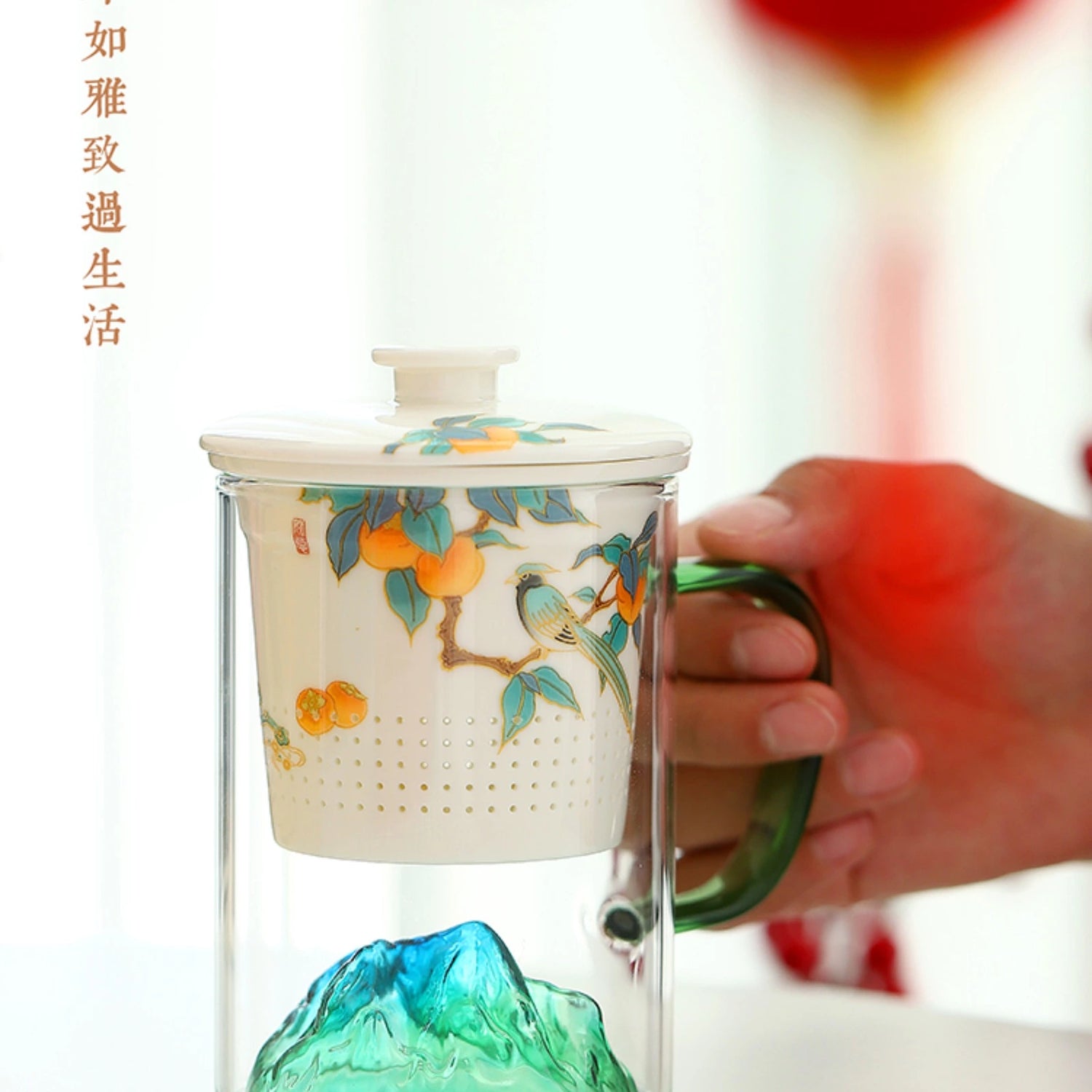

Glass Tea Cup Large-Capacity Heat-Resistant with Lid & Built-In Filter
Glass Tea Cup Large-Capacity Heat-Resistant with Lid & Built-In Filter
Product Description:
This stylish and functional tea cup is perfect for personal tea brewing. Made from durable, high-borosilicate glass, it’s designed to handle extreme temperature changes from -4°F to 302°F, allowing you to pour boiling water directly into the cup without worry. The built-in ceramic infuser makes it easy to quickly filter tea leaves, while the lid can be flipped upside down to conveniently hold the infuser when not in use.
Capacity: 13.5oz (400ml)
Ideal for tea lovers who appreciate both practicality and aesthetics!
Panda Ceramic Gongfu Tea Tasting Cup
Add a playful touch to your tea session with this handcrafted ceramic tasting cup featuring an adorable panda design. Perfectly sized for Gongfu tea brewing, it holds just the right amount for appreciating aroma, color, and flavor. The smooth glaze and comfortable feel make it a joy to hold, while the panda motif adds charm to every sip.
Ideal for oolong, puerh, and other traditional teas
A great gift for tea lovers and panda fans alike
Herbal Tea Jin Qian Liu: Also known as the “Money Tree,” this deciduous tree belongs to the walnut family and is found in several Chinese provinces, including Anhui, Jiangsu, and Zhejiang. It thrives in sunny environments, has deep roots, and grows quickly. Its wood is used for furniture, and its bark can be used to make tannin. The leaves can be made into health tea that helps lower blood pressure, blood sugar, and cholesterol. This tea is valued for its unique benefits in boosting immunity, offering antioxidant properties, and combating aging.
Jasmine tea sampler — enjoy small portions at the best value. Scented with fresh jasmine flowers, free from additives, and naturally fragrant.
See more jasmine tea
The teapot mats are mainly made of cloth, designed to prevent cups and Yixing teapots from bumping against the table. When you place the cup back, it makes little to no sound, creating a softer and quieter tea-drinking atmosphere.
The fabric is absorbent, allowing you to easily wipe off any water or tea stains from the teapot or cup, keeping the table clean and dry. Most coasters and mats also feature elegant patterns or unique shapes, making them lovely decorative pieces for a tea table or tearoom.
Sizes:
Handcrafted Sunflower Teapot Mat: Max diameter 19 cm, center circle 13 cm
*All sizes are measured by hand, and a margin of error of ±1 cm may occur.
As an essential decoration on the tea table, a tea mat helps organize teaware such as teapots and cups, bringing them together into a harmonious setting. It sets the tone for the tea experience—whether tranquil, elegant, or lively. Placed on the table, it also helps prevent direct contact between teaware and the surface, offering cushioning and anti-slip protection.
The tea towel, usually square or rectangular, is an important cleaning tool during tea preparation. It’s used to wipe the teapot, teacups, or any water stains on the tea mat, keeping the tea space neat and graceful
We offer a variety of styles and colors for both tea mats and tea towels. Each design—whether hand-painted or hand-embroidered—is carefully crafted with attention to detail.
Sizes:
Hand-embroidered Tea Mat – Snowflake Design: 20 × 38 cm
Hand-embroidered Tea Mat – Lotus Design: 20 × 38 cm
Hand-embroidered Tea Mat – Red Fruit Design: 20 × 38 cm
*All sizes are measured by hand, and a margin of error of ±1 cm may occur.
Recently viewed products
Chat with fellow tea lovers, ask questions, and share your tea moments.
Chat with fellow tea lovers, ask questions, and share your tea moments.





